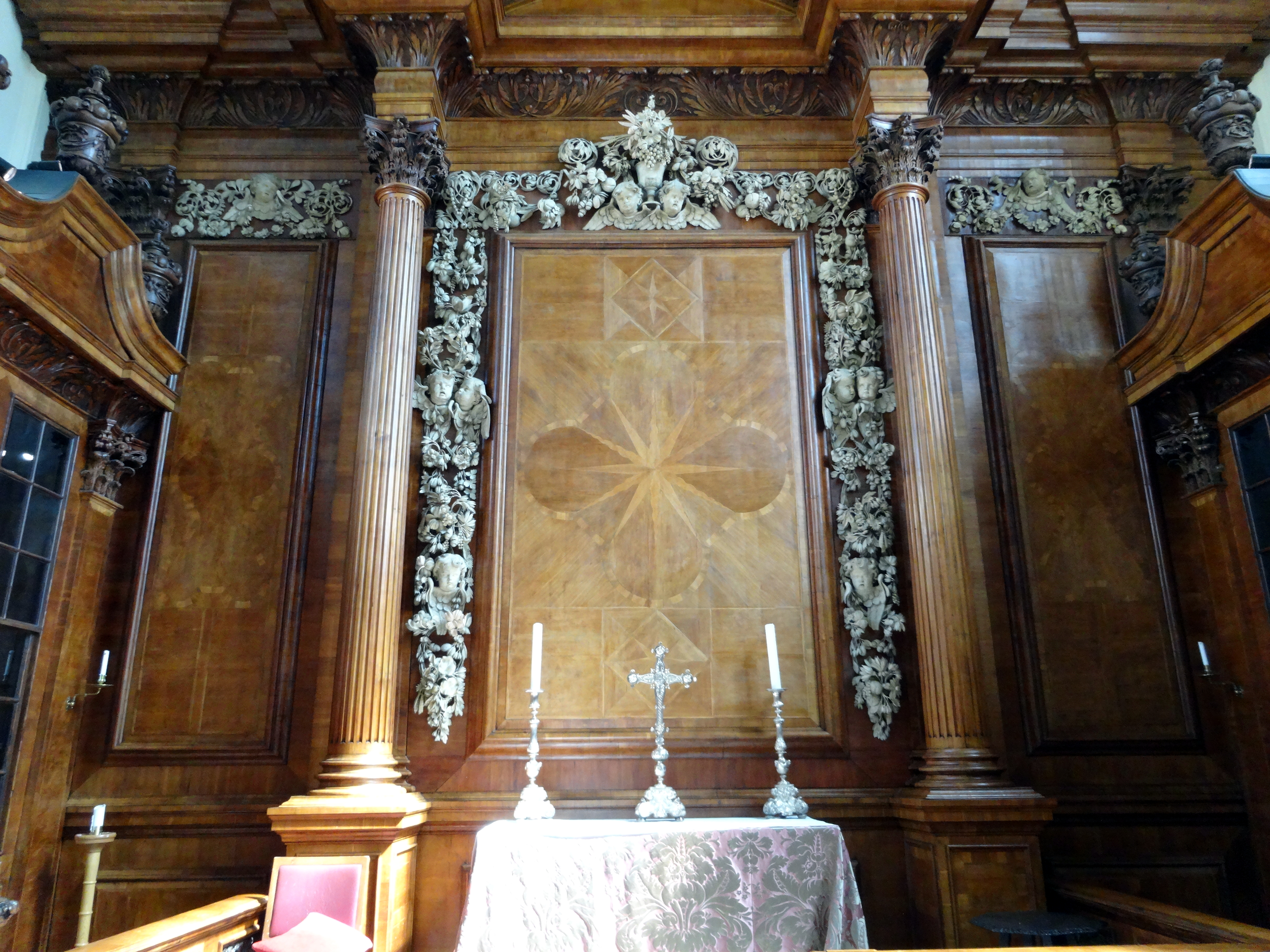
Spectacular!
The chapel was closed for renovation the last time we were nearby (2016 on the first Grinling Gibbons in London tour). It was certainly worth waiting until our 2019 UK visit to see the results of the renovation.
Reredos
The center of attention is the reredos behind the altar, the brightest set of carvings in the chapel. The carvings are rich and deep, much like those in Saint James Piccadilly. Unlike Saint James, I could not get to the side of the carvings to judge actual depth, but they easily appear to be 12-15 inches deep along the drops and quite a bit more at the crown, truly deep and rich. The conservation project returned these carvings back to something near their original color. David Esterly would be pleased to know that the paint and dark Victorian era stain is gone.
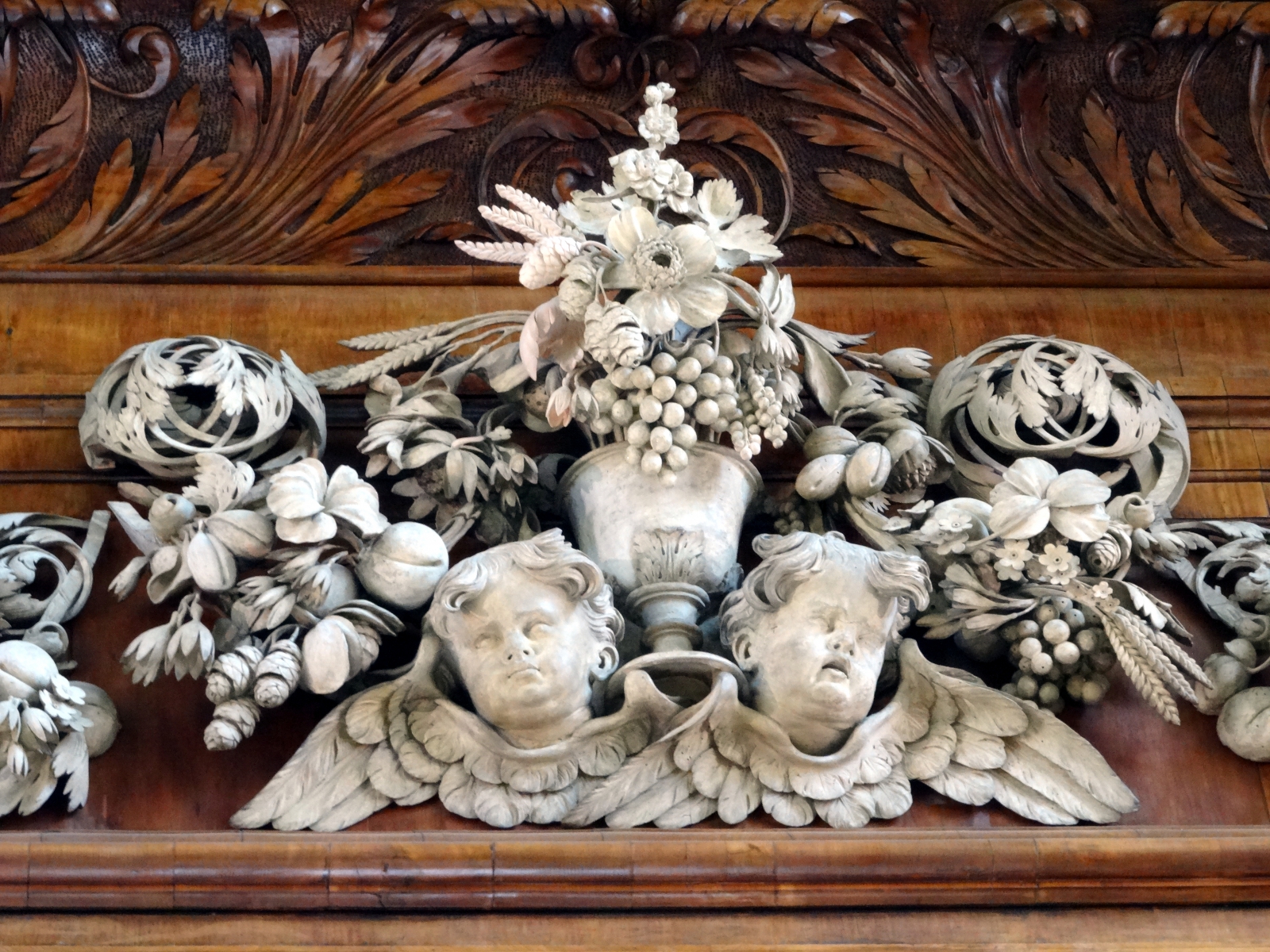
If you look carefully at the detail photos, you can pick out a few replacement parts that have slightly different tones. Further down in this article there are more details about the conservation work. I found some of the details and photos of that work fascinating.
Reredos top details
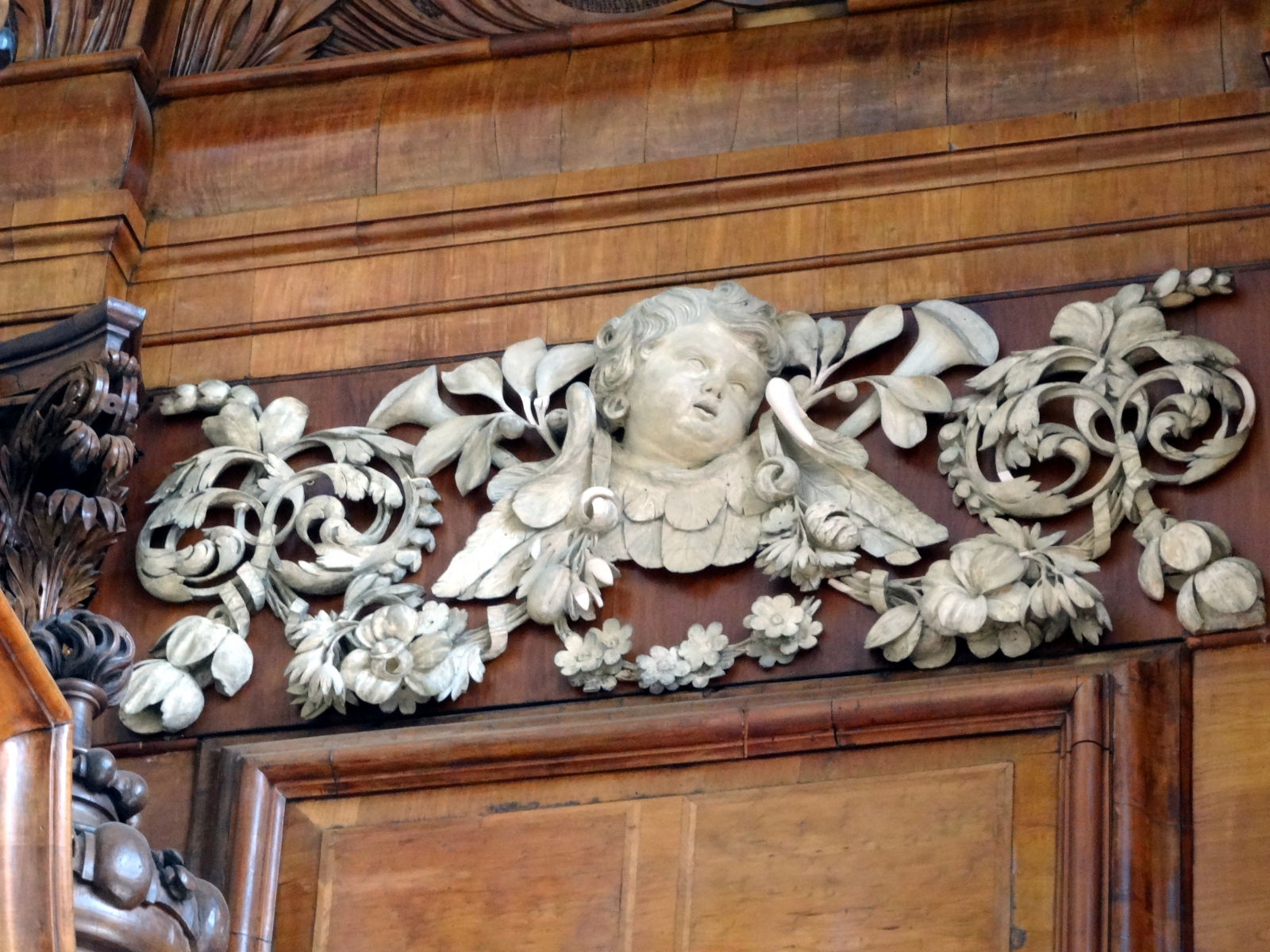
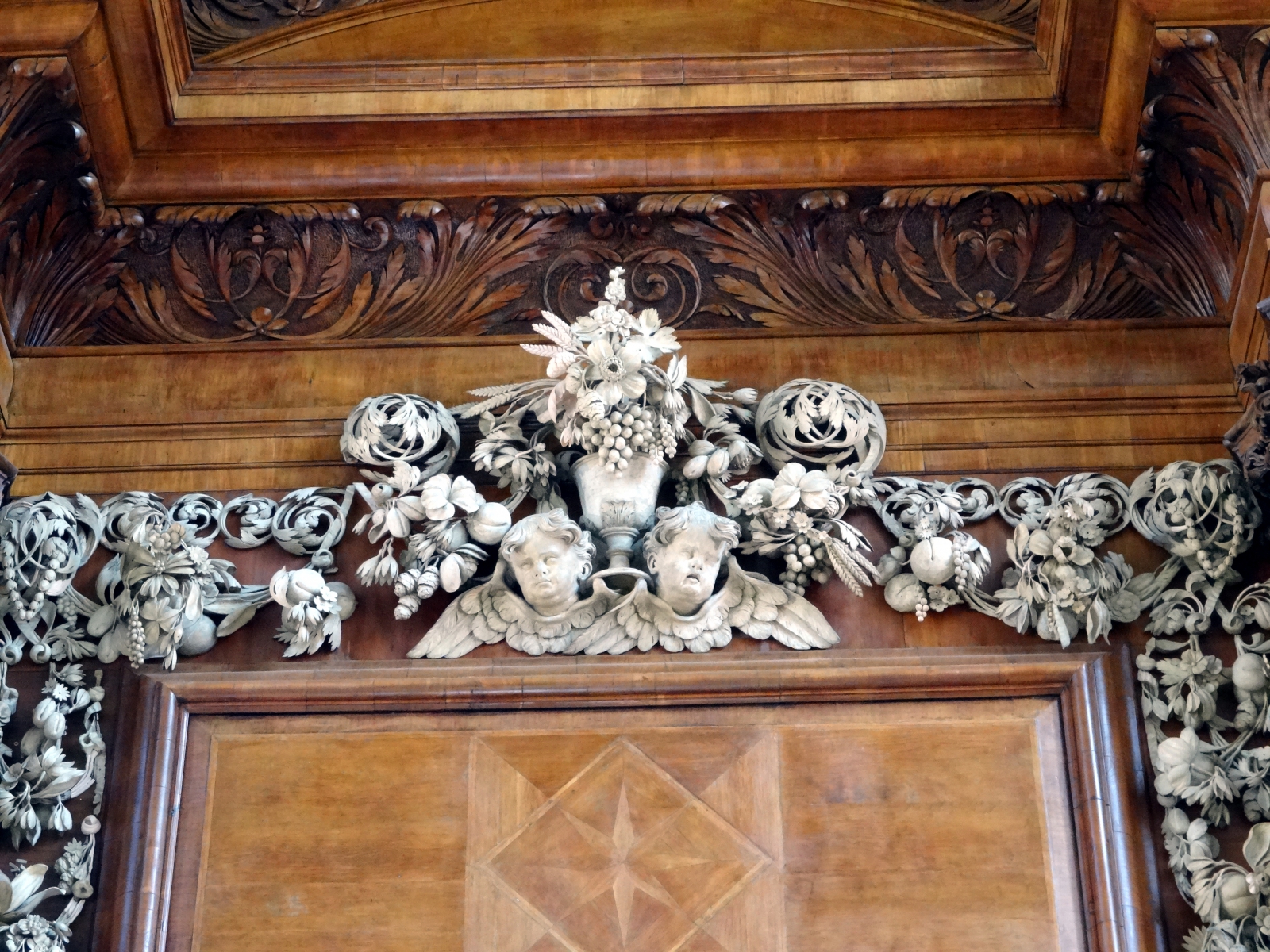
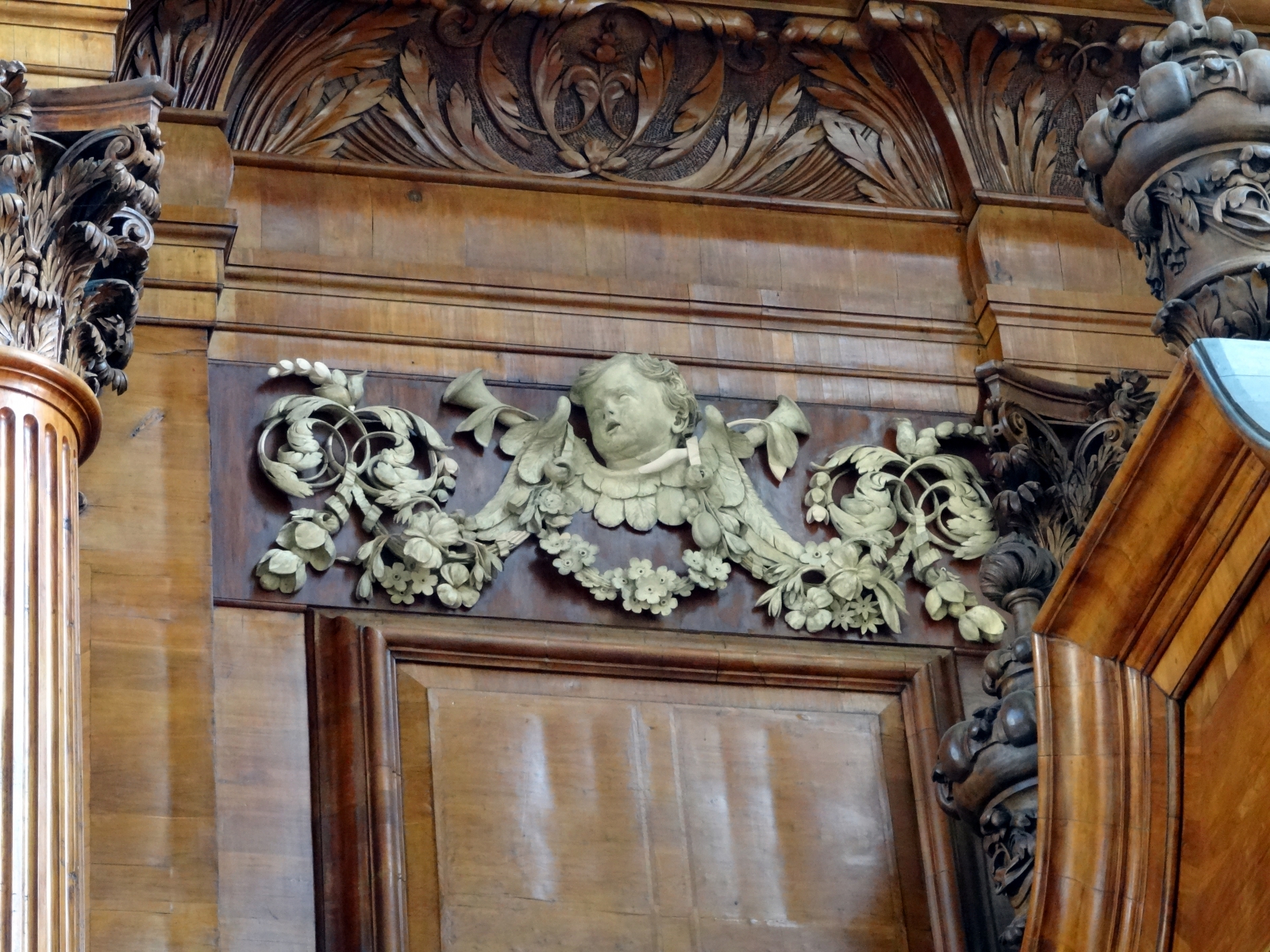
The vertical drops – north – south
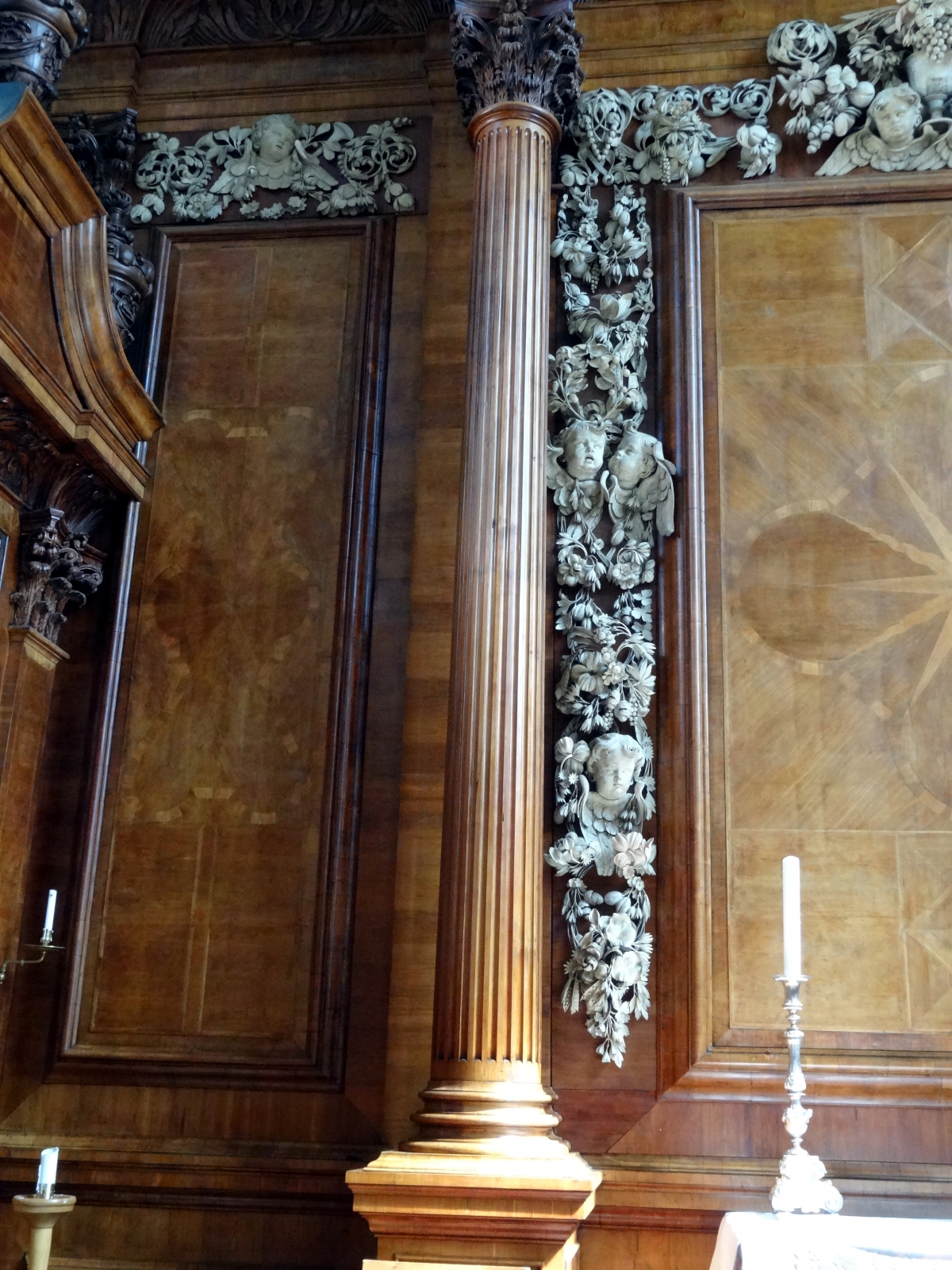
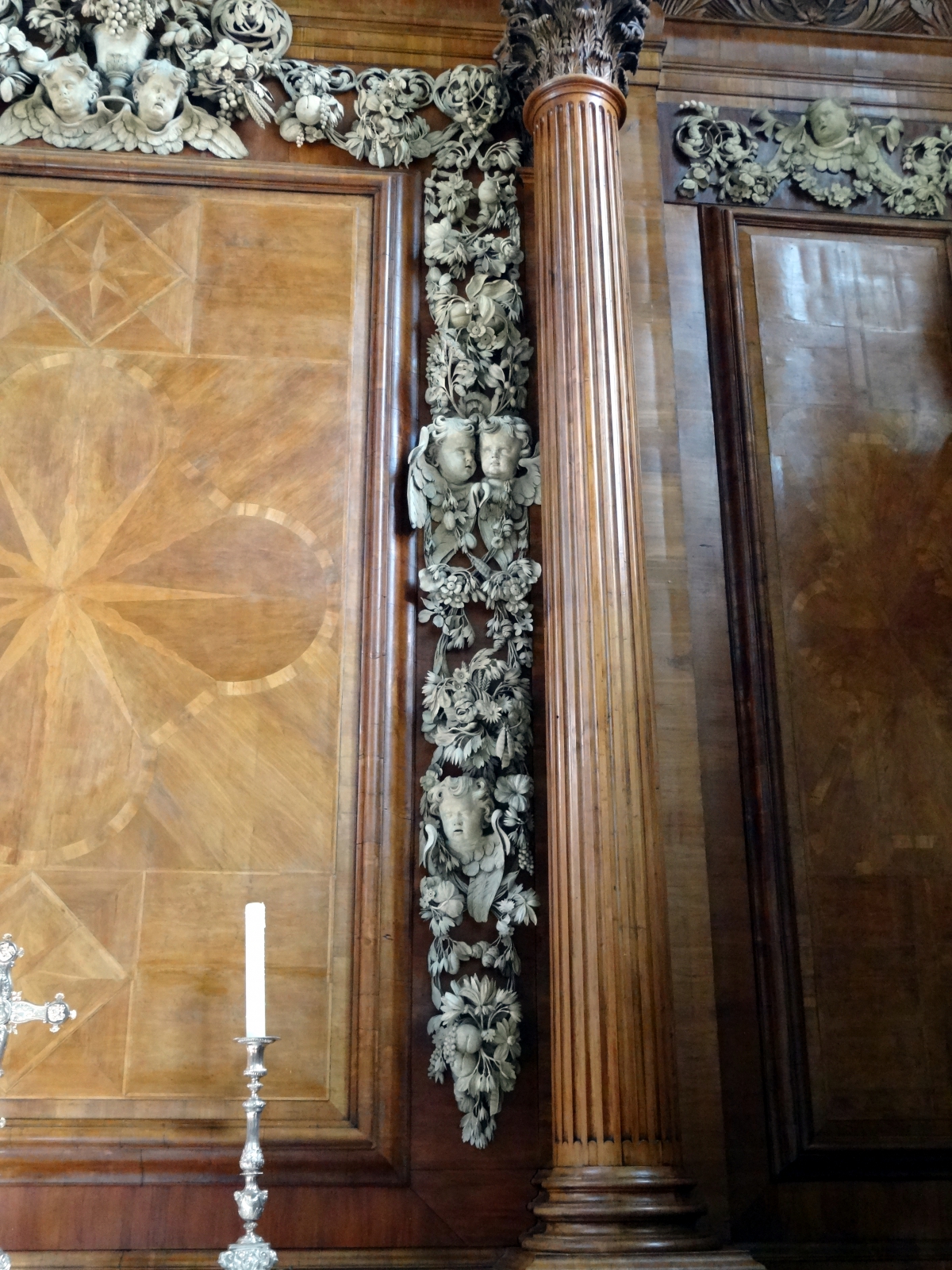
Drop details – north – south
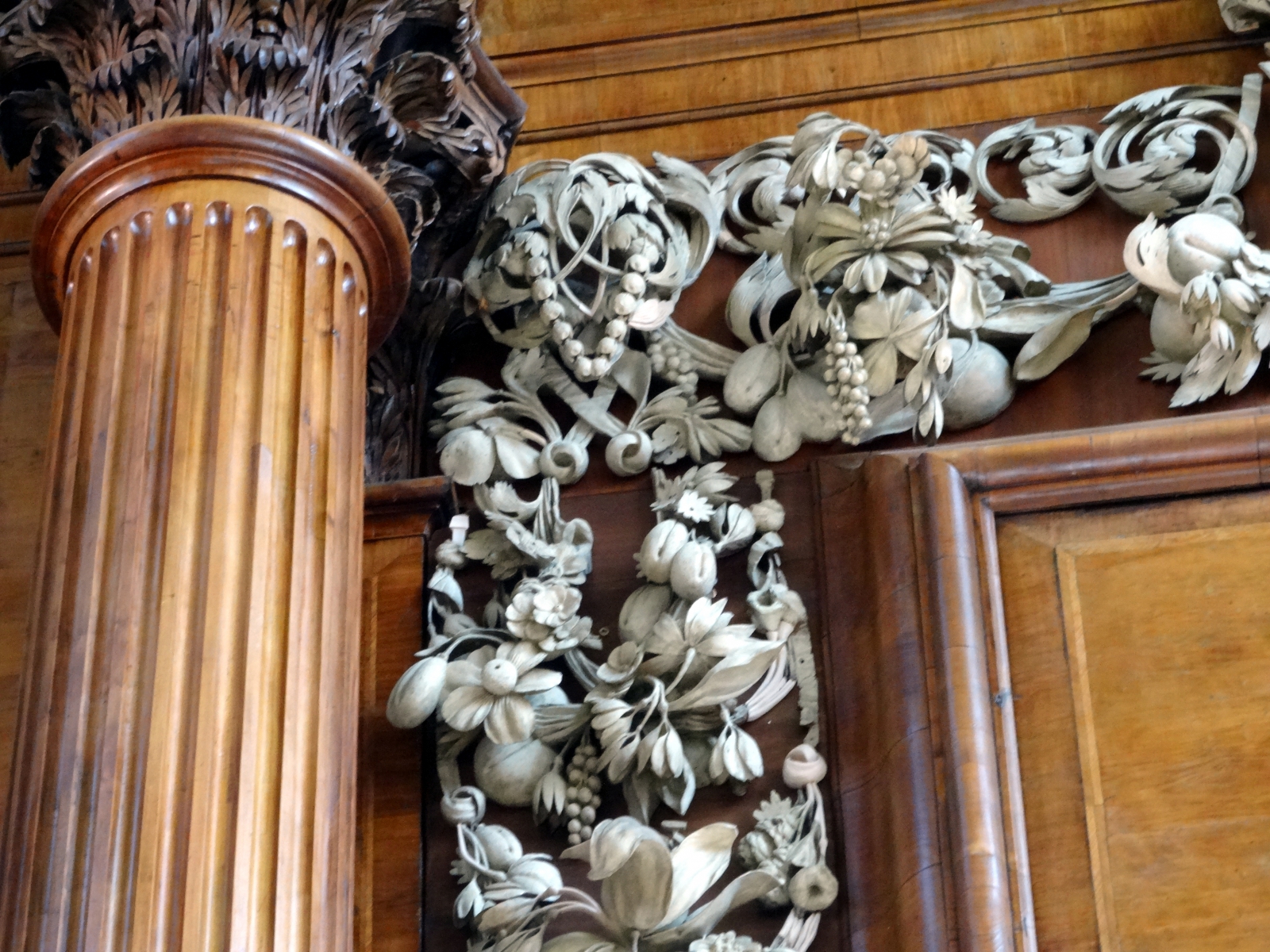
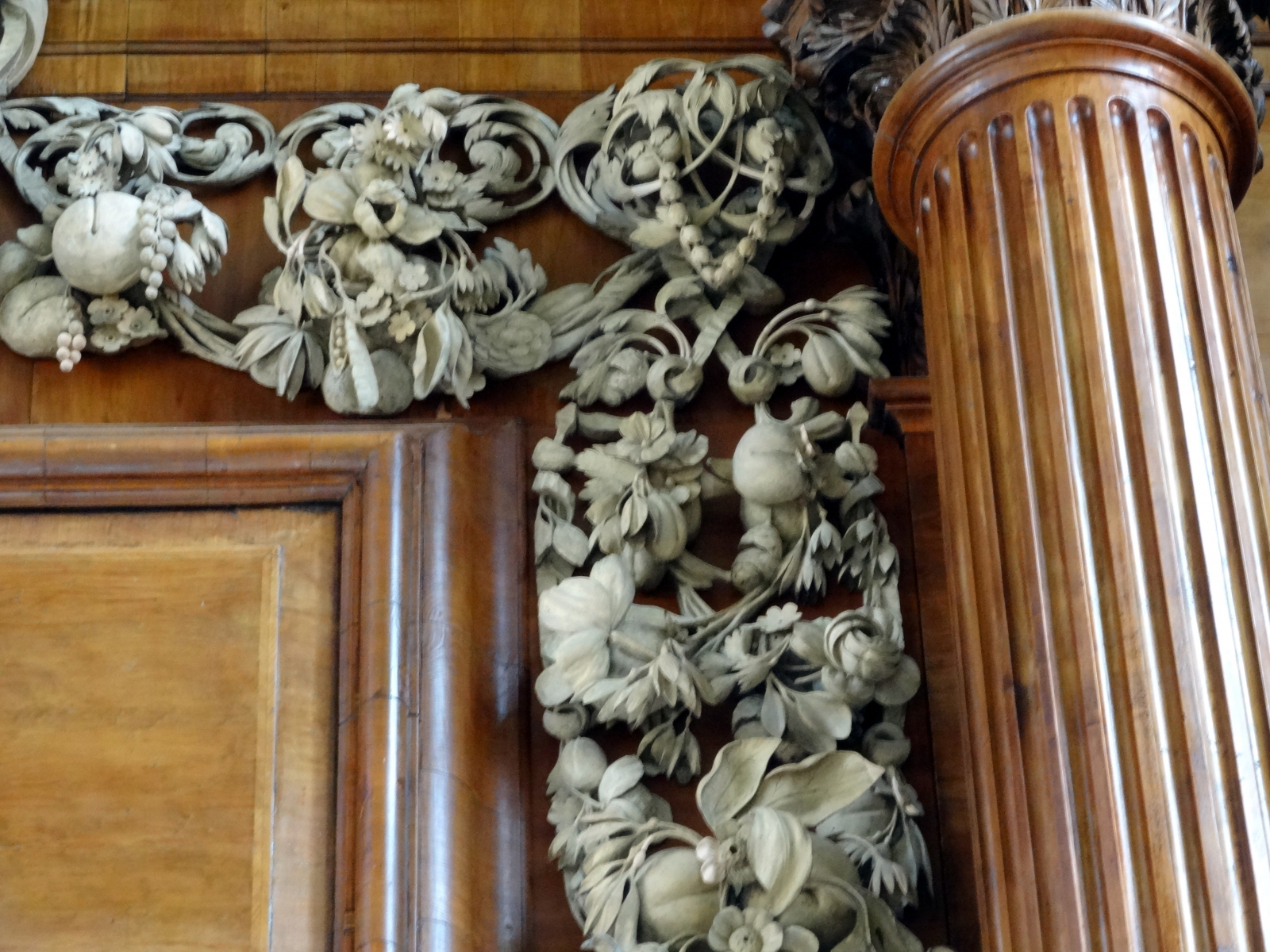
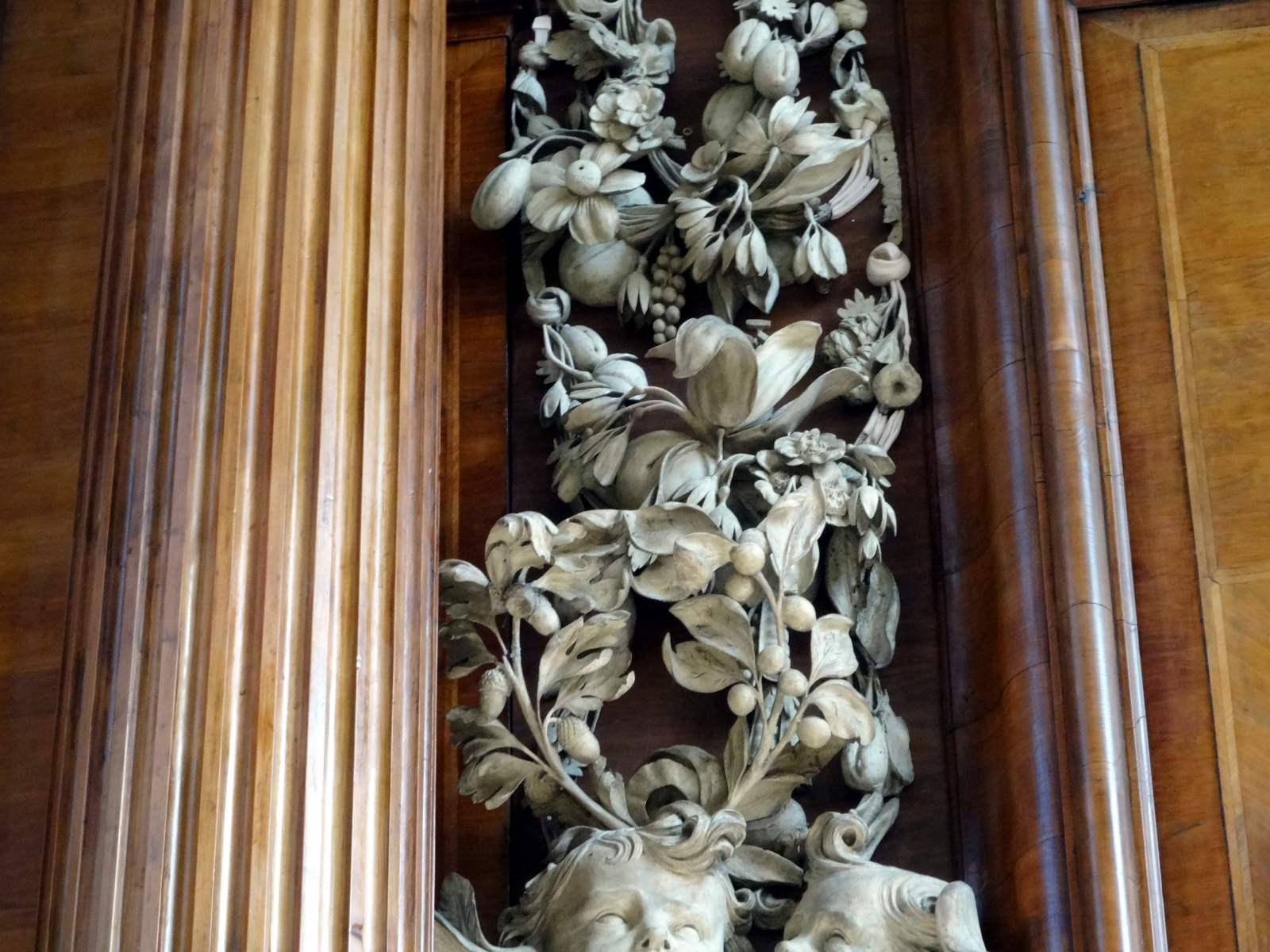
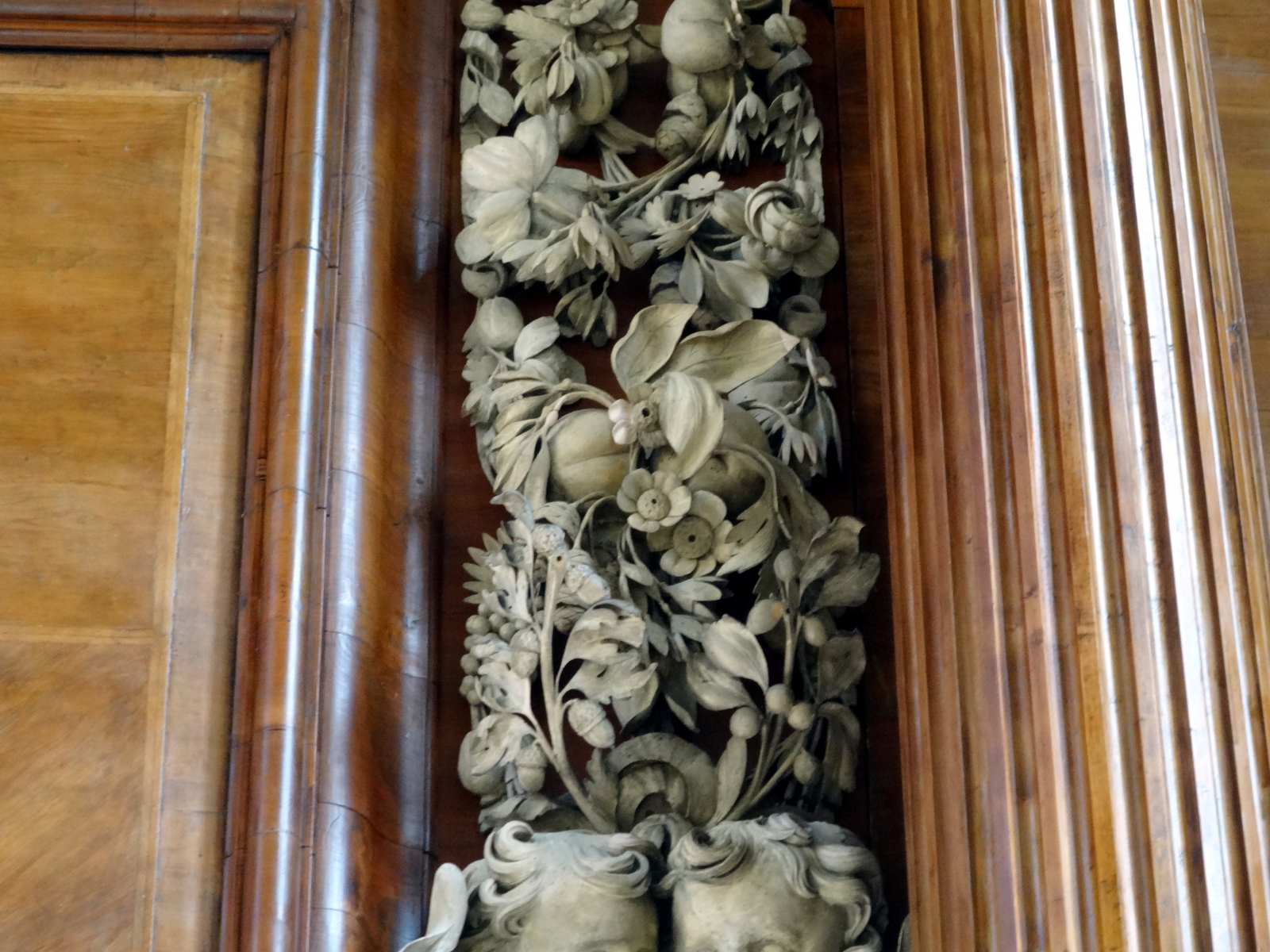
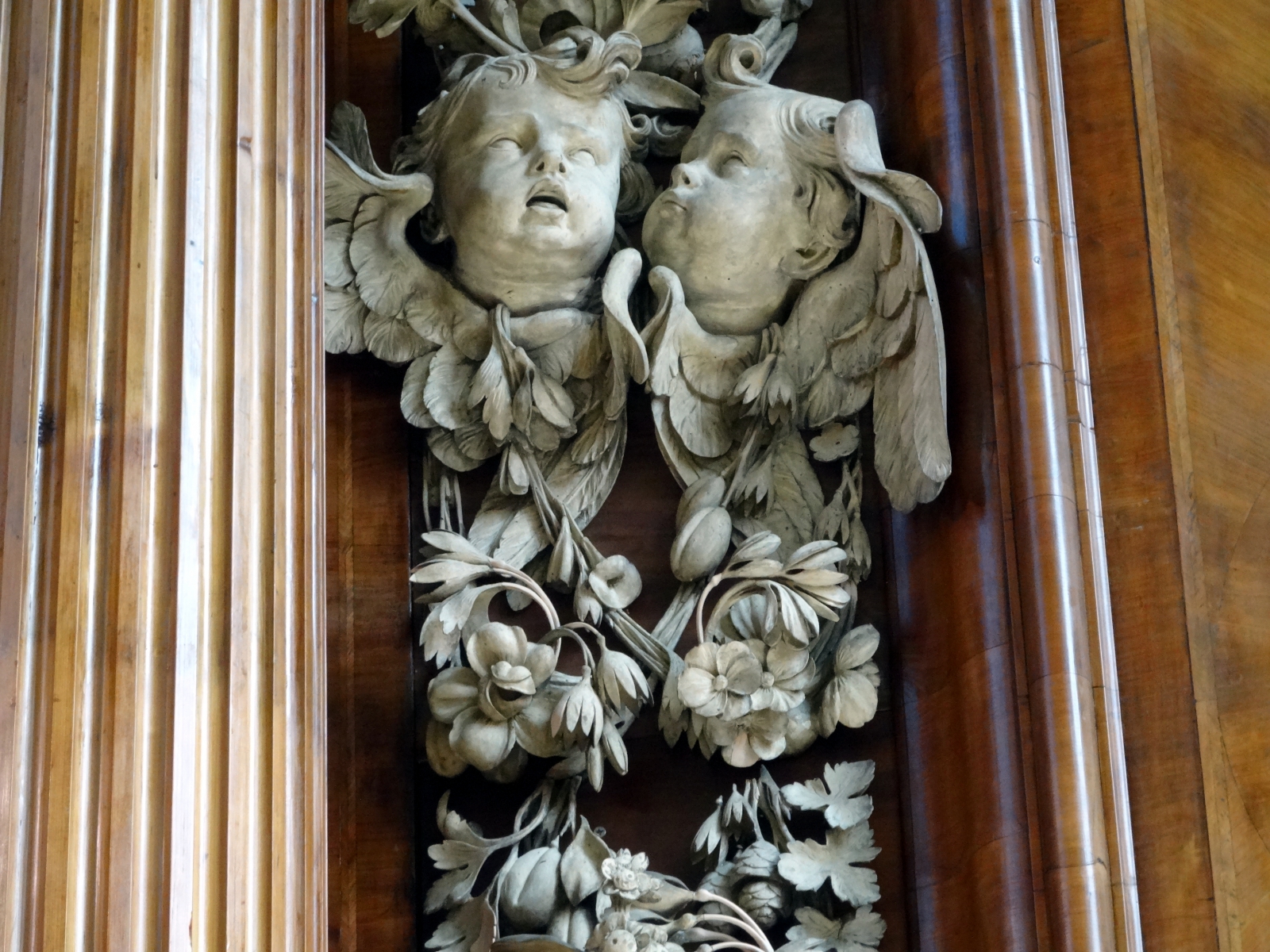
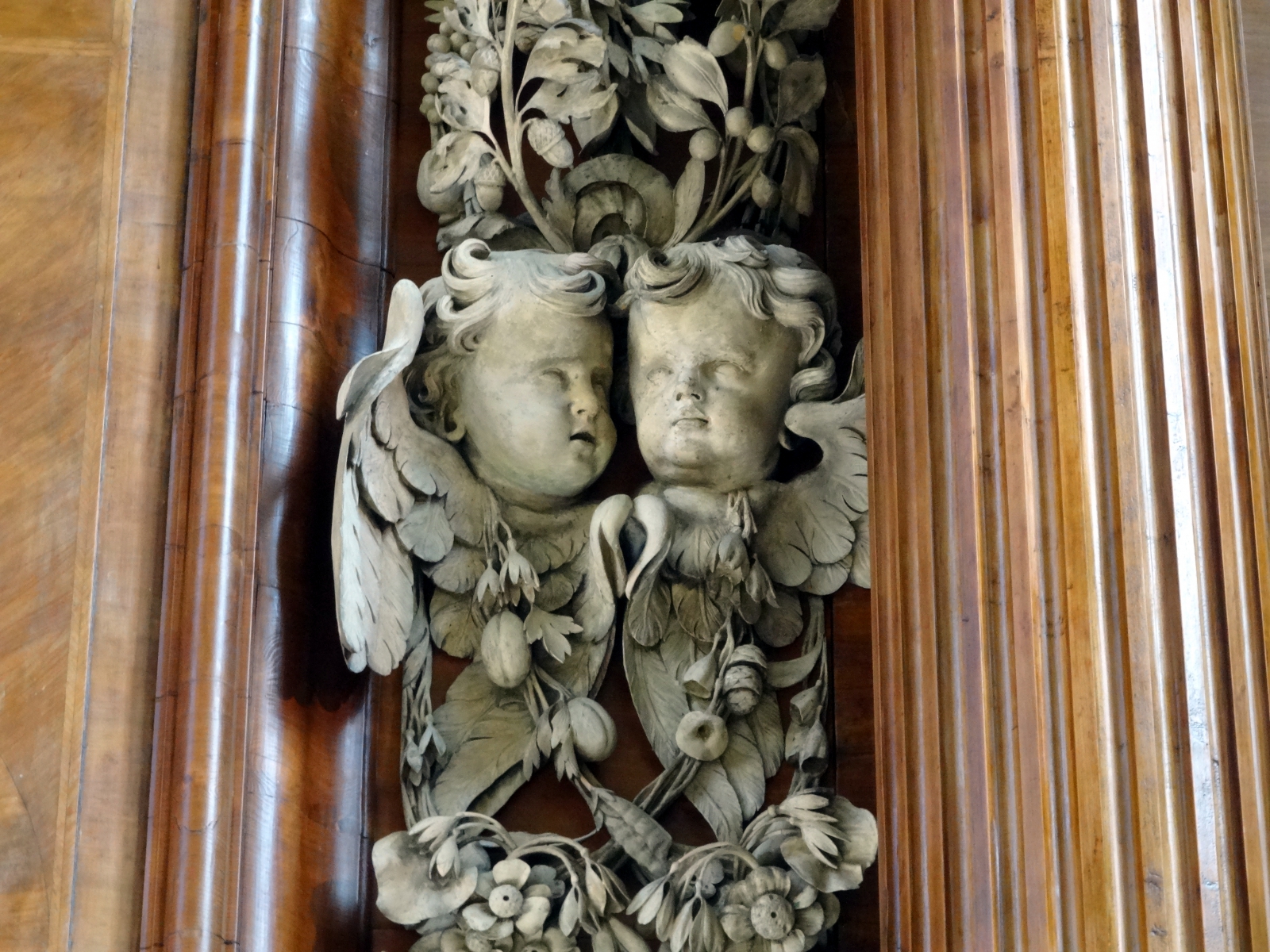
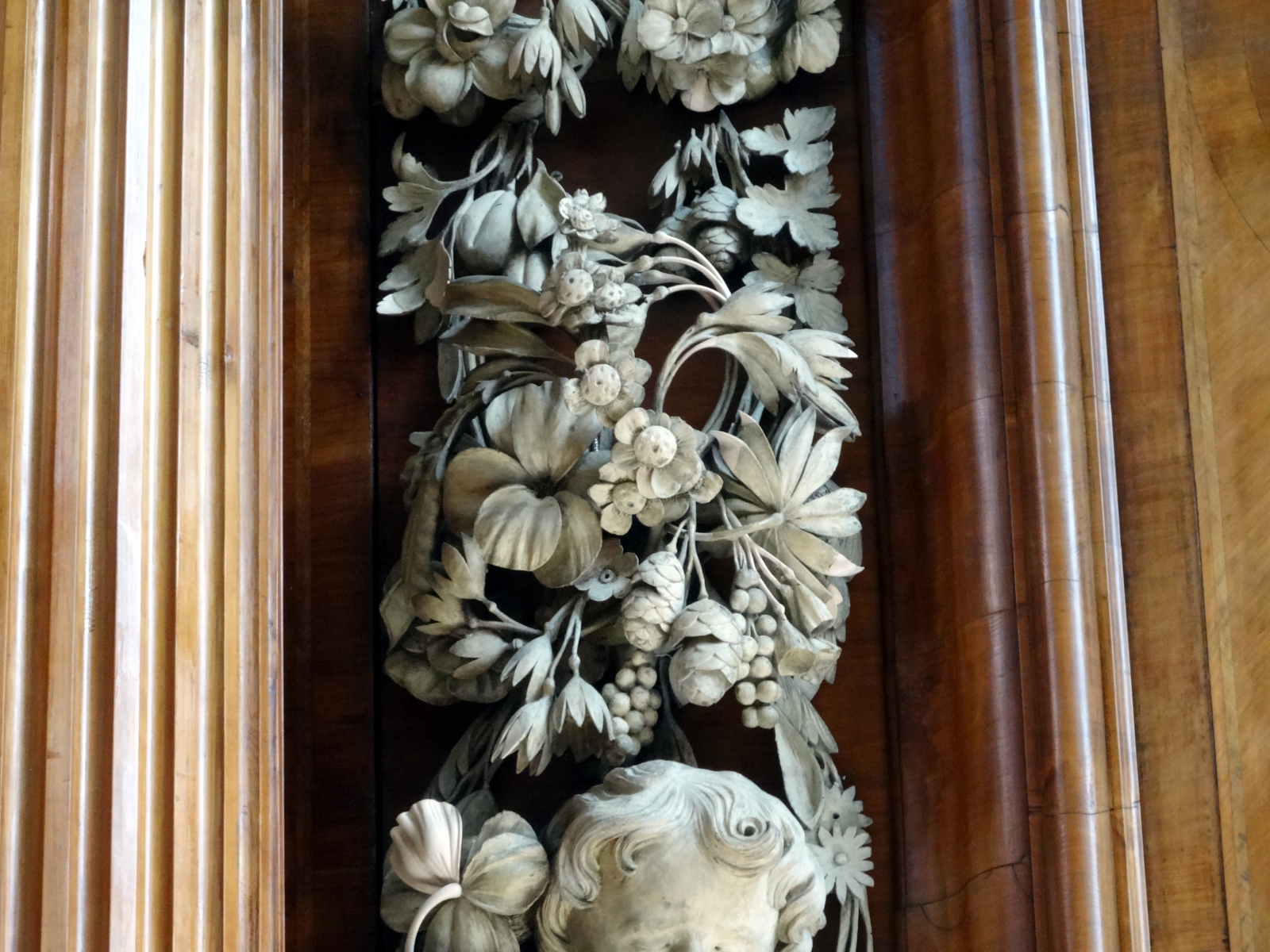
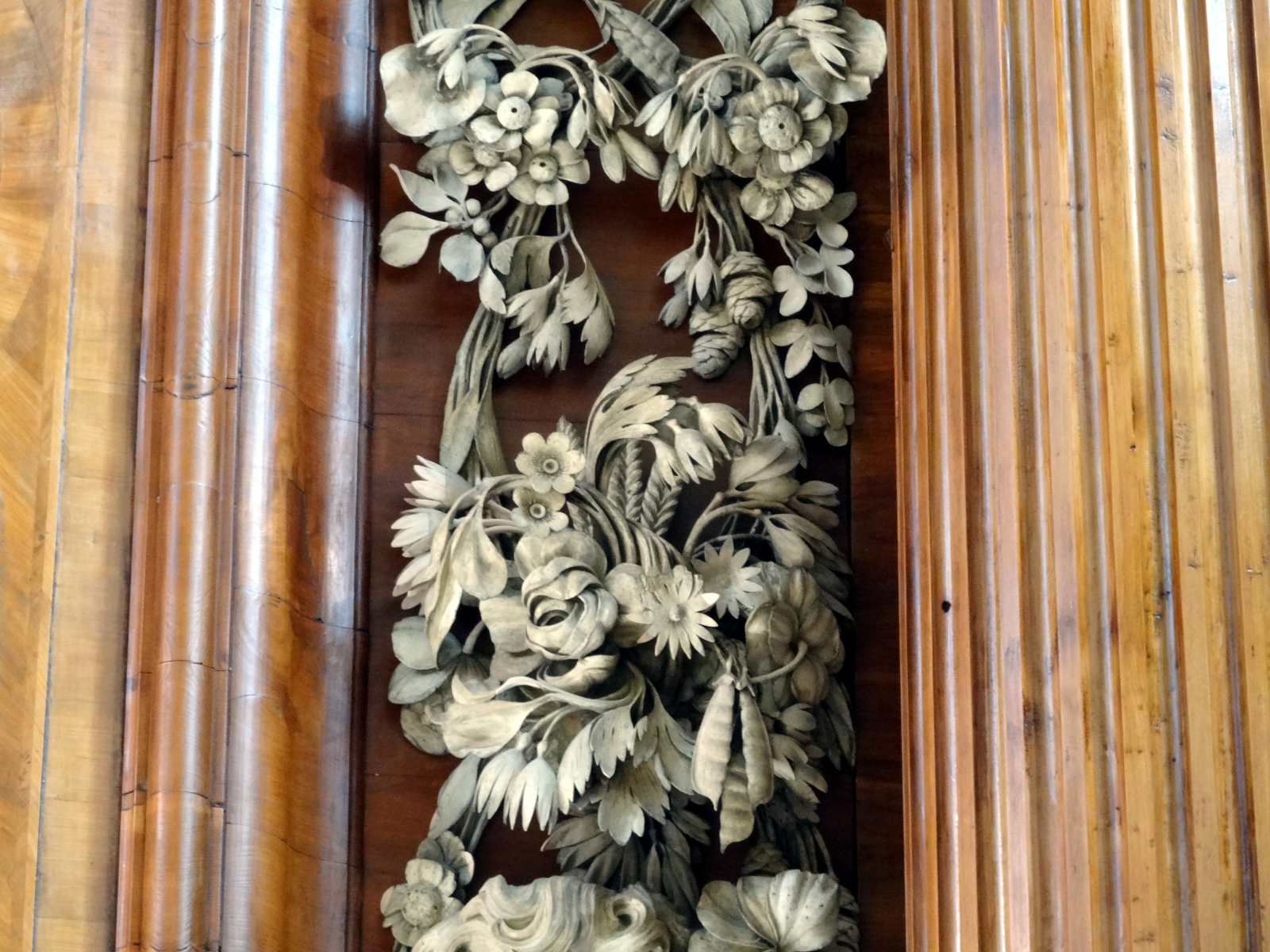
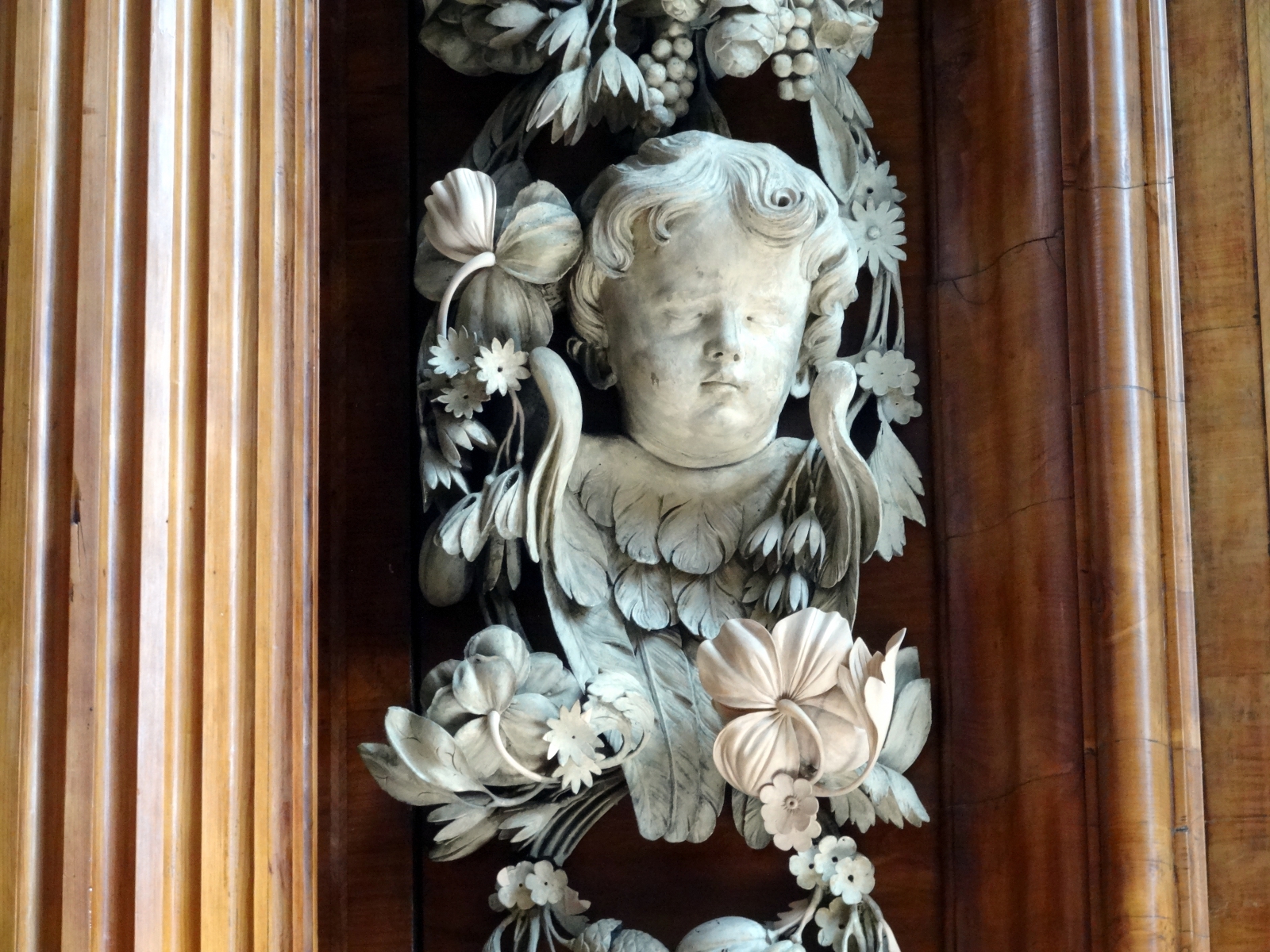
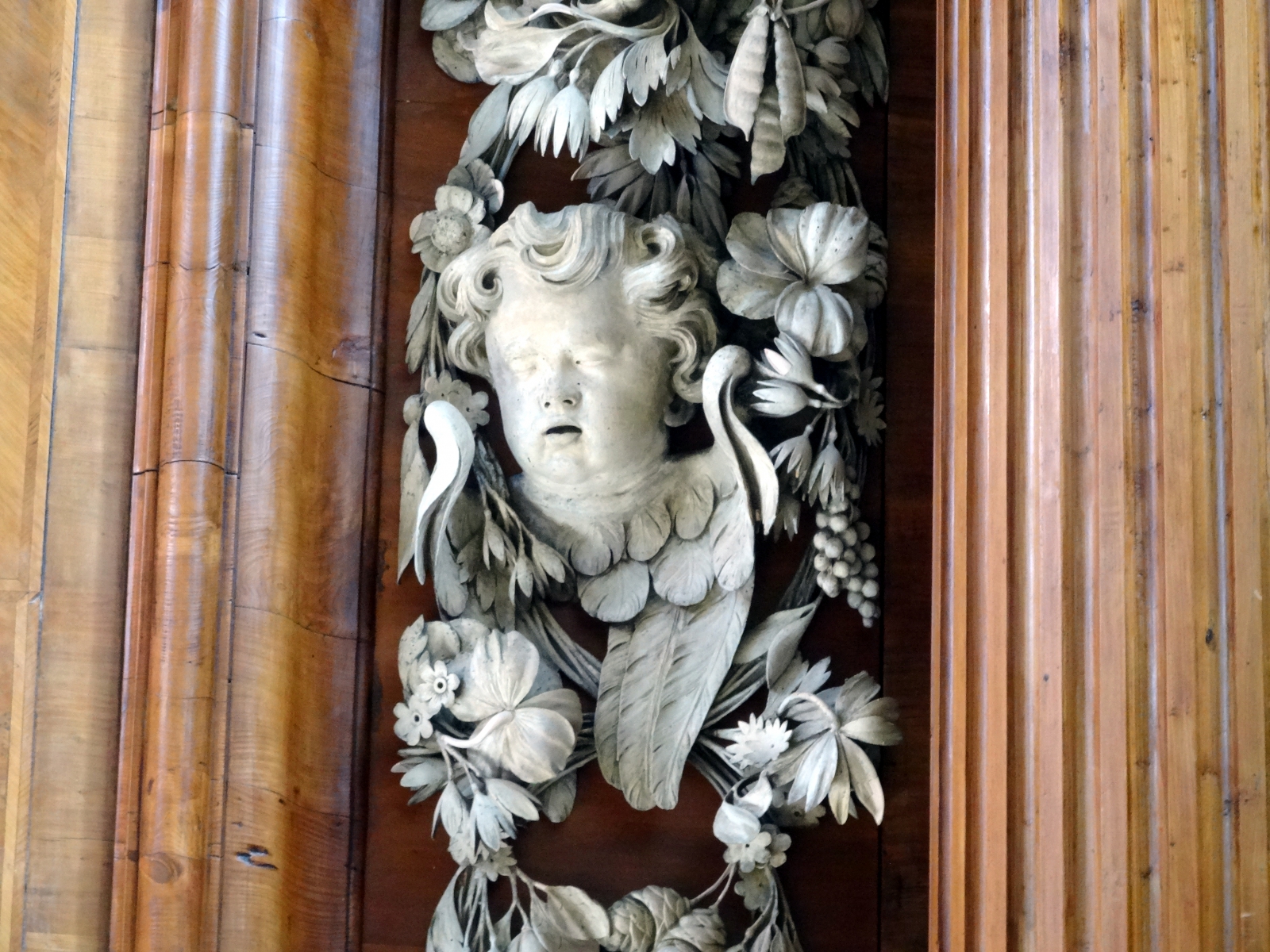
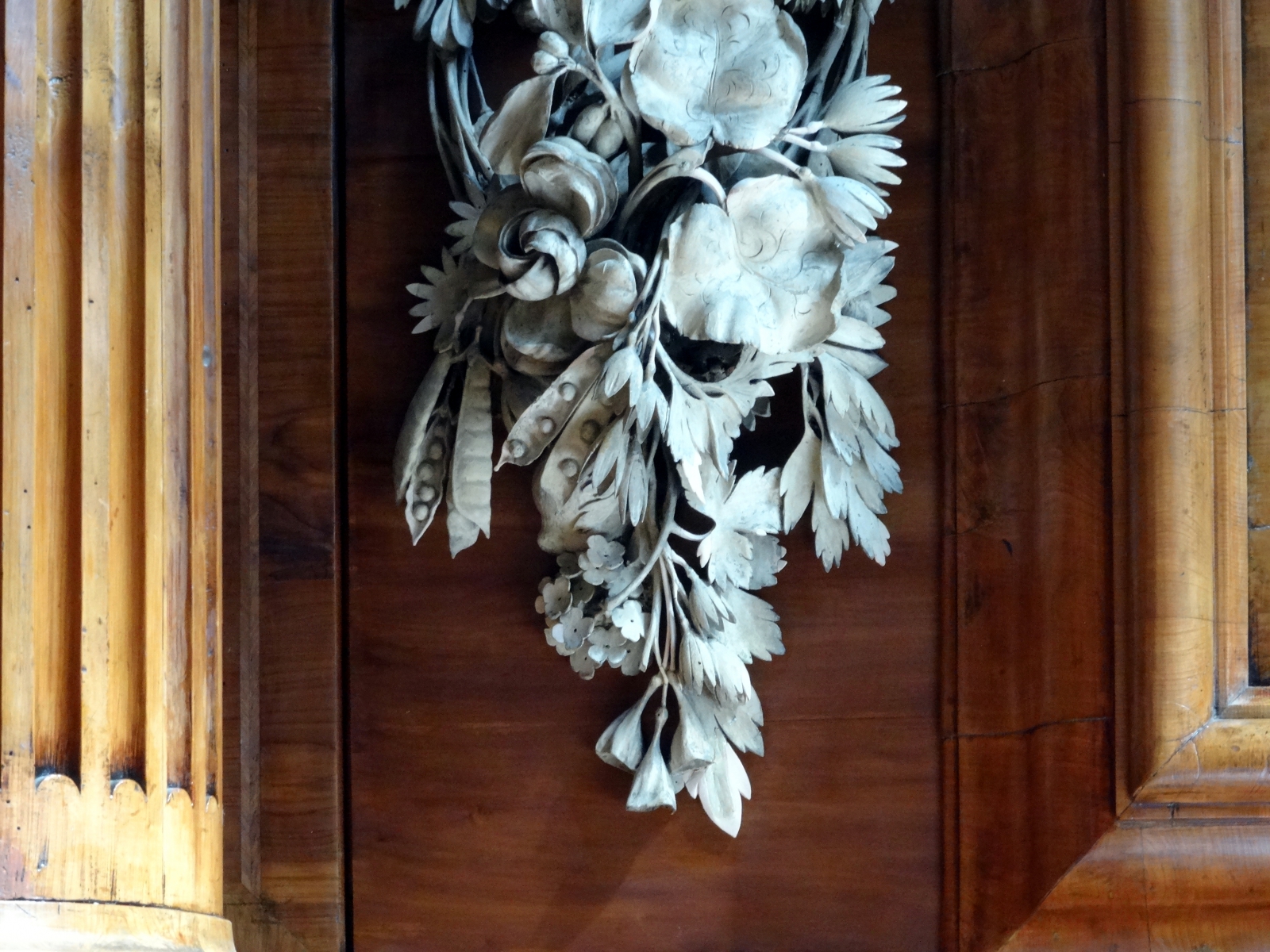
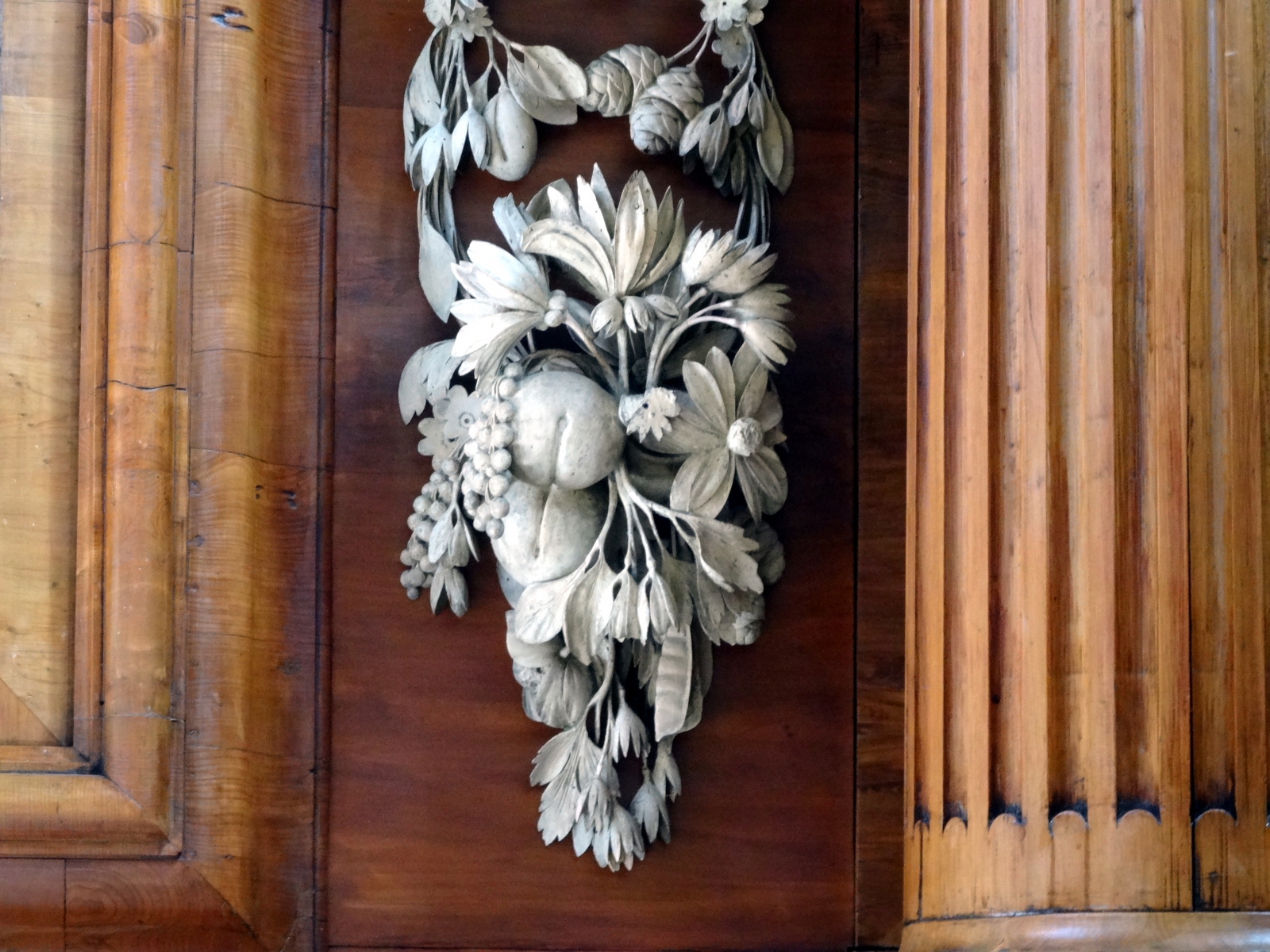
Way up above the reredos
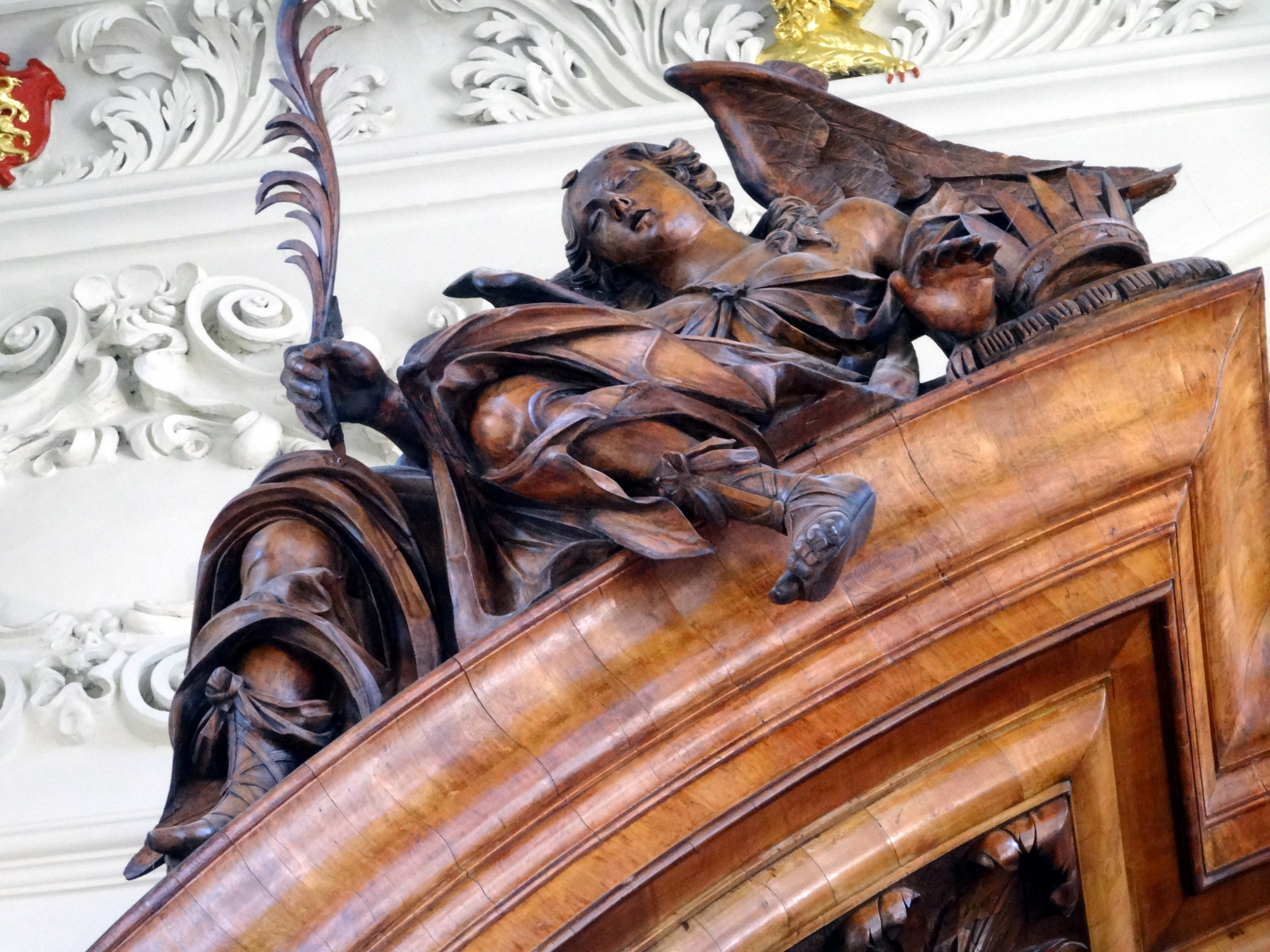
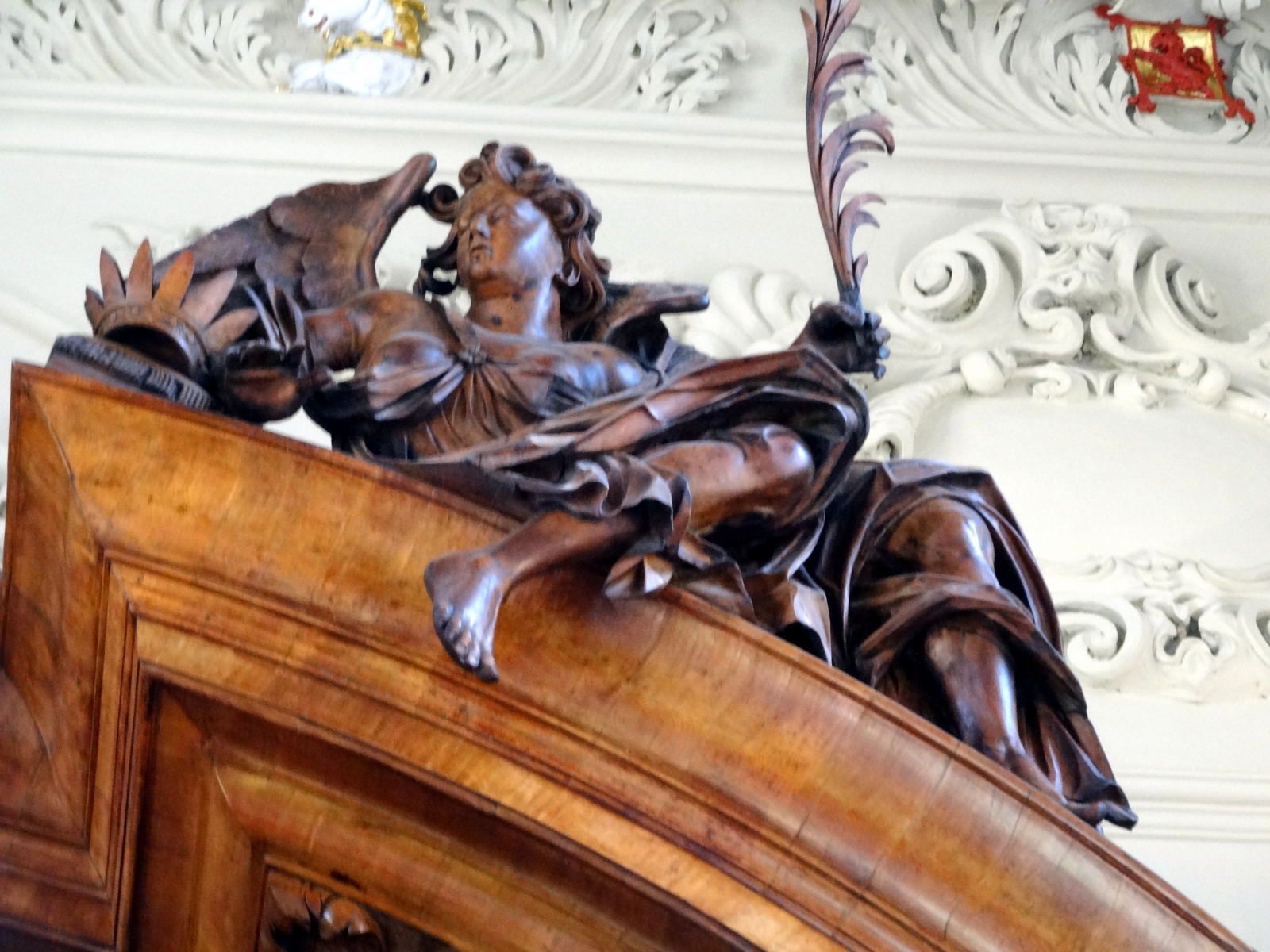
While we have many photos on this page, I completely failed to take a long view of the reredos. You can see one here, and discover that far above the reredos is a very broad arch topped with yet more carved figures.
Screen
The screen is the very first thing one sees on entering the chapel. “Screen” seems a misnomer, since it is actually a thick wall and portal that stands between the small antechapel and the nave of the chapel. It alone holds a massive amount of carved material, on both sides, and on the top. Unlike the reredos, these carvings were left dark, a choice which has them blending well with the structure to which they are attached.
Some of the carvings at the top of the screen (four apostles, a bull’s head, an eagle, an urn and who knows what else) are difficult to see from the floor. They are most likely best appreciated from the organ loft … and the door to the loft was solidly locked. Eva tried it. and grumbles til this day about not getting upstairs
Screen – antechapel side
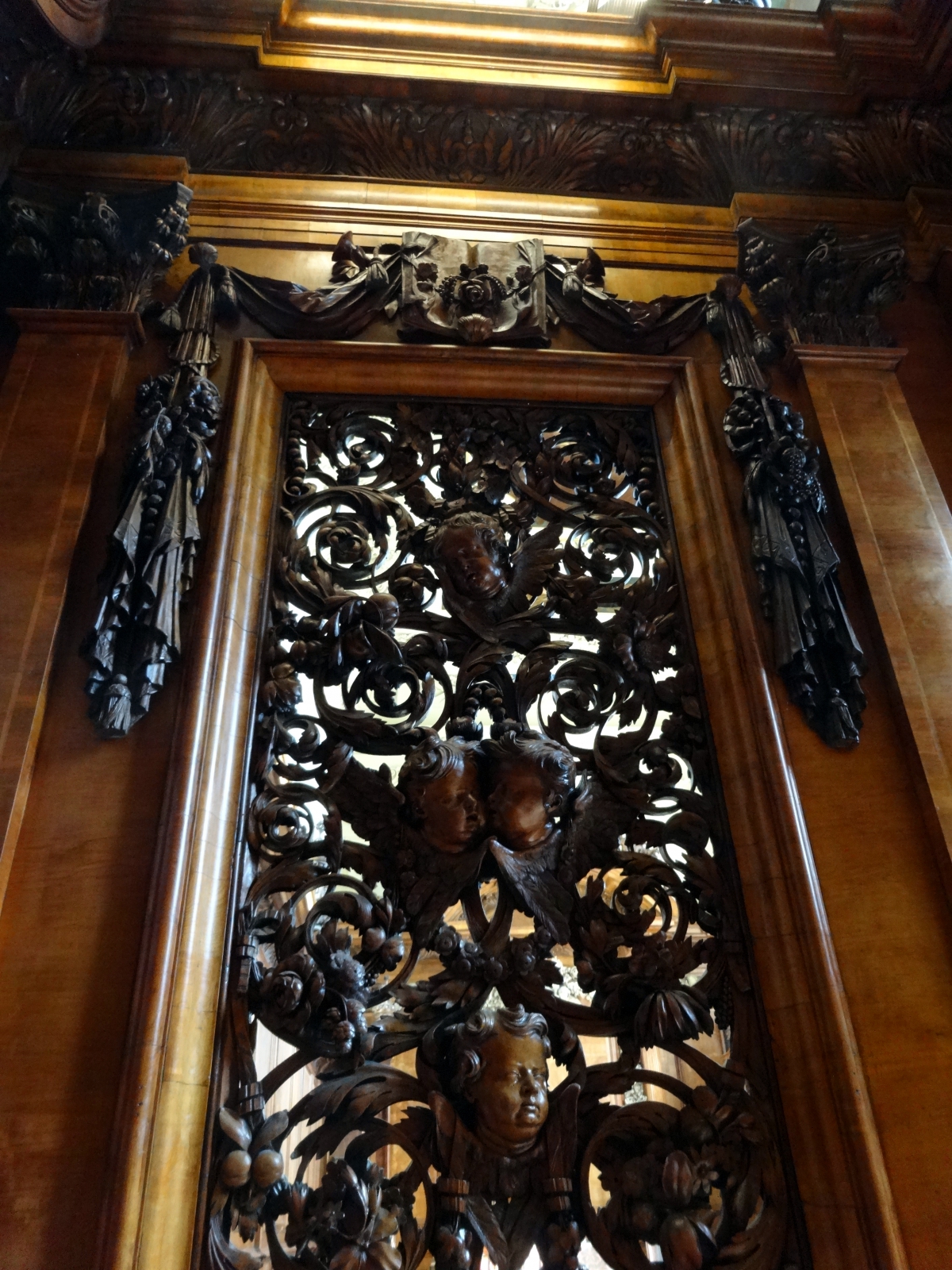
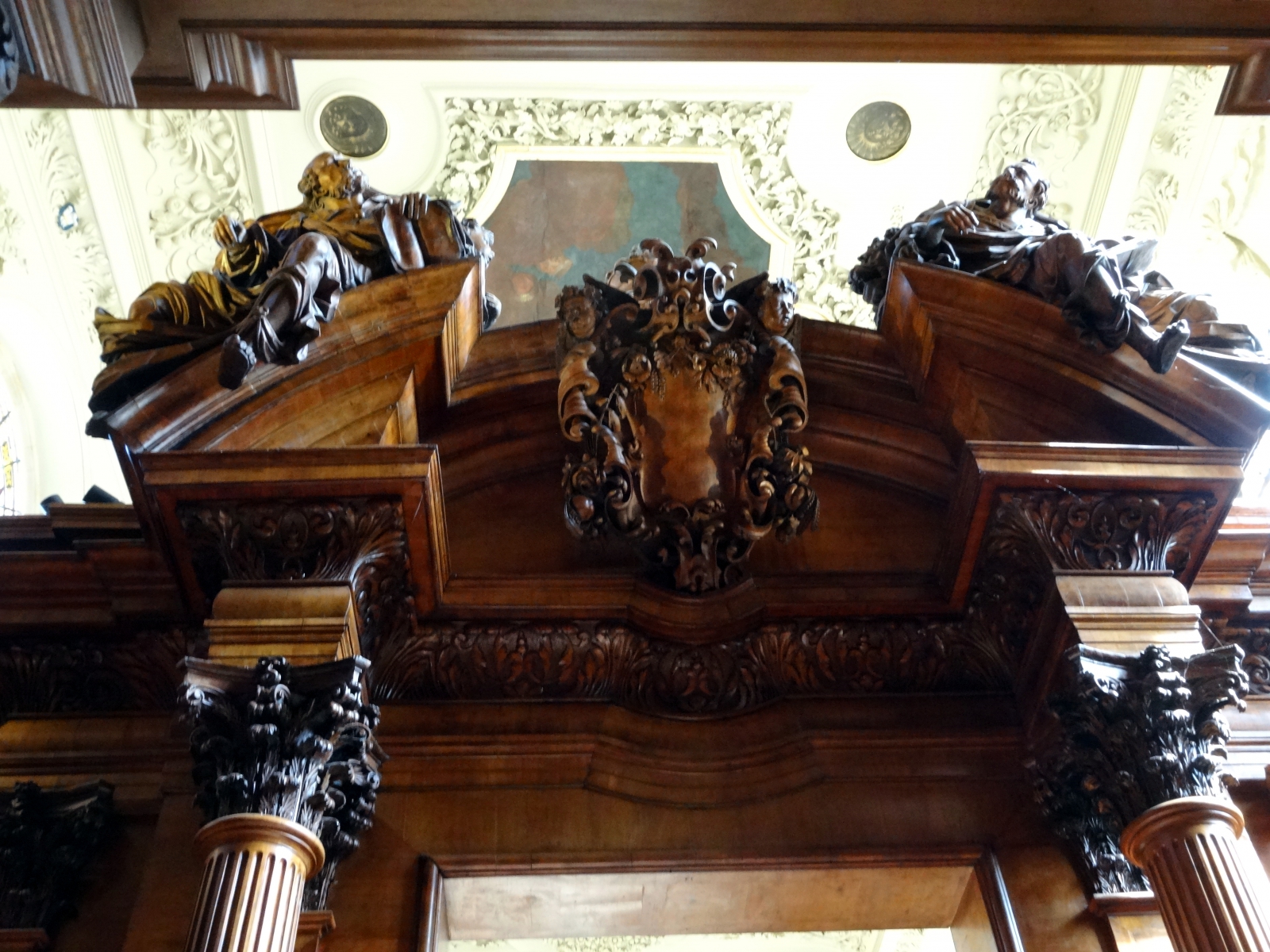
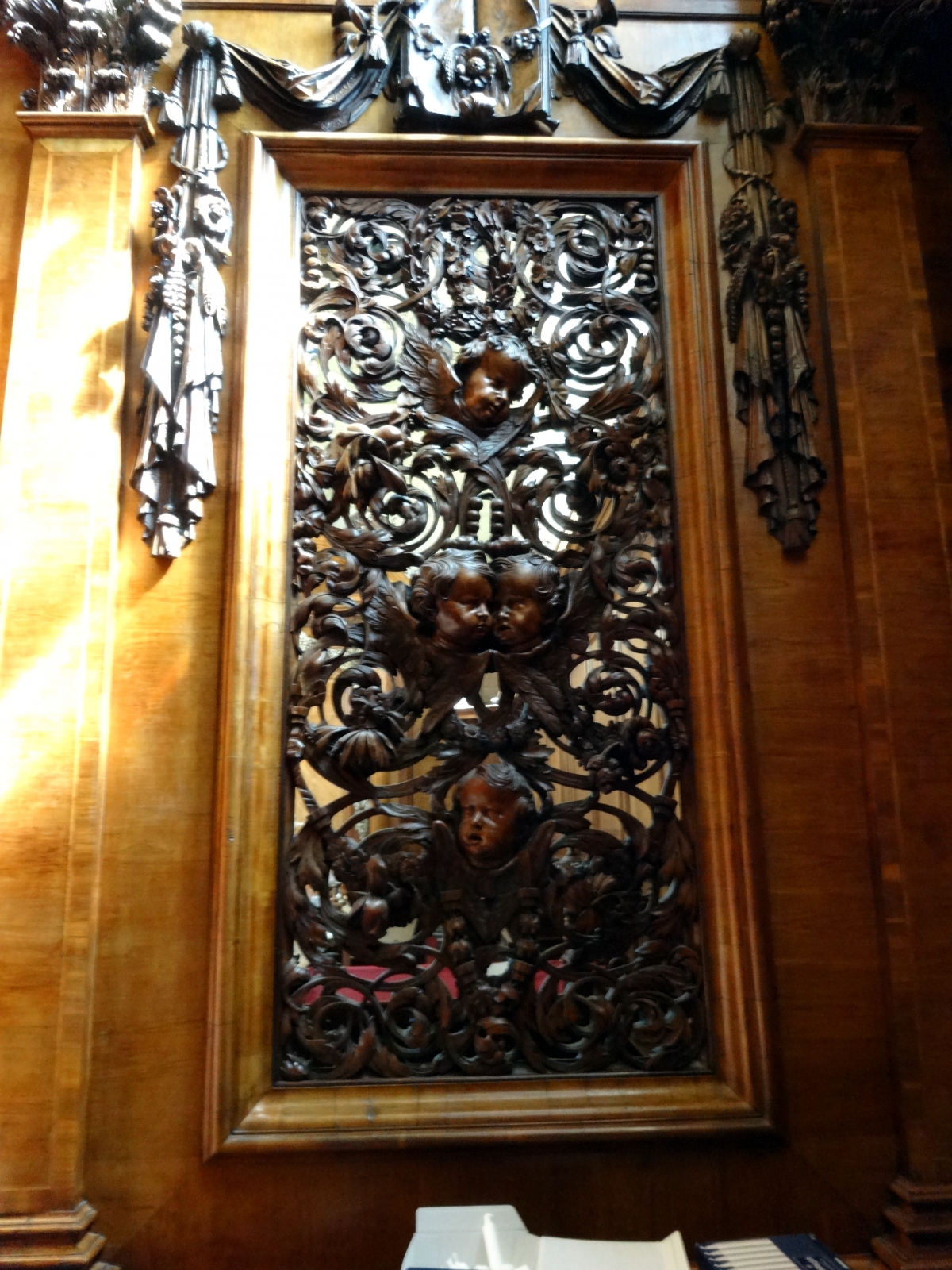
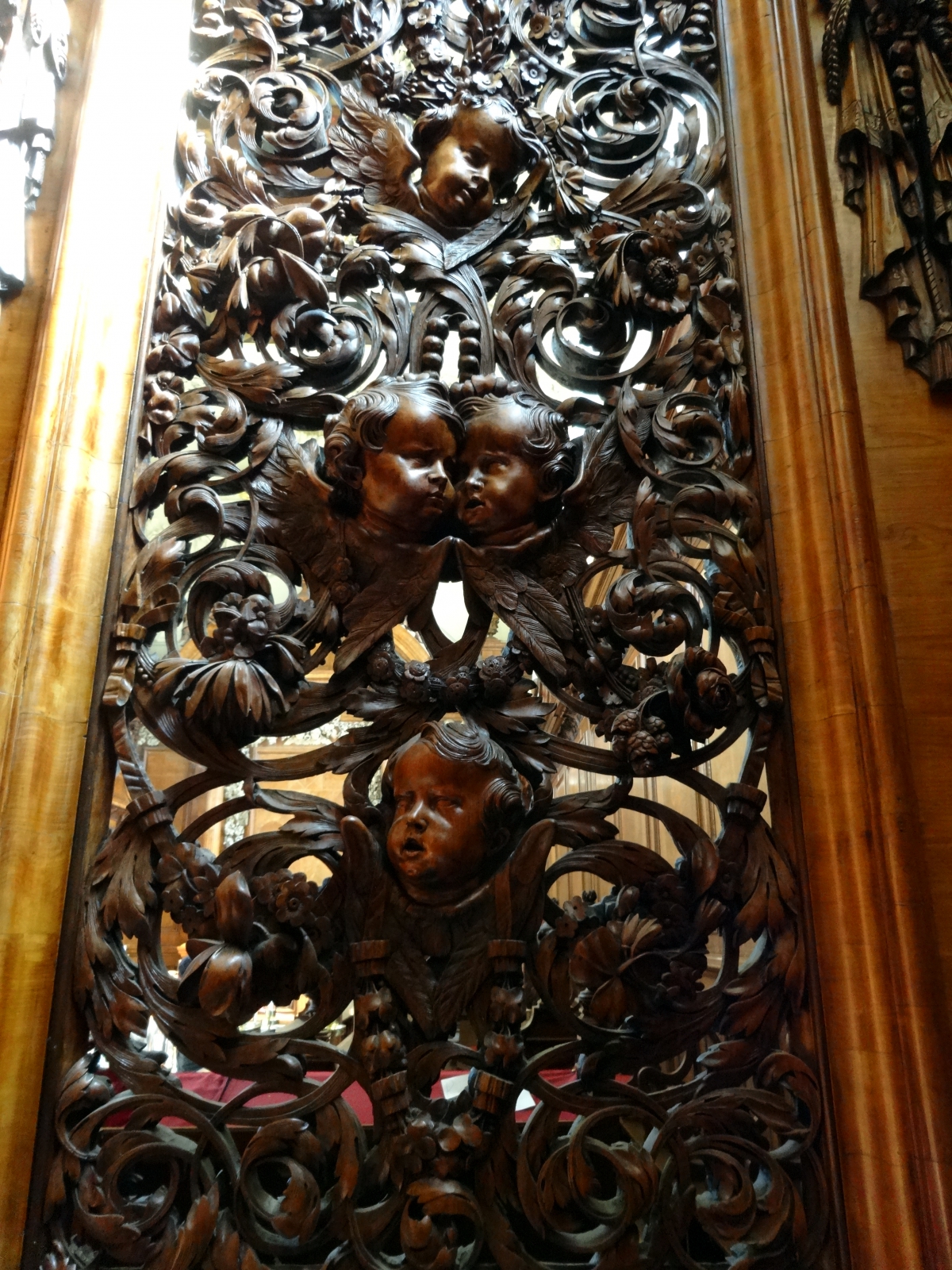
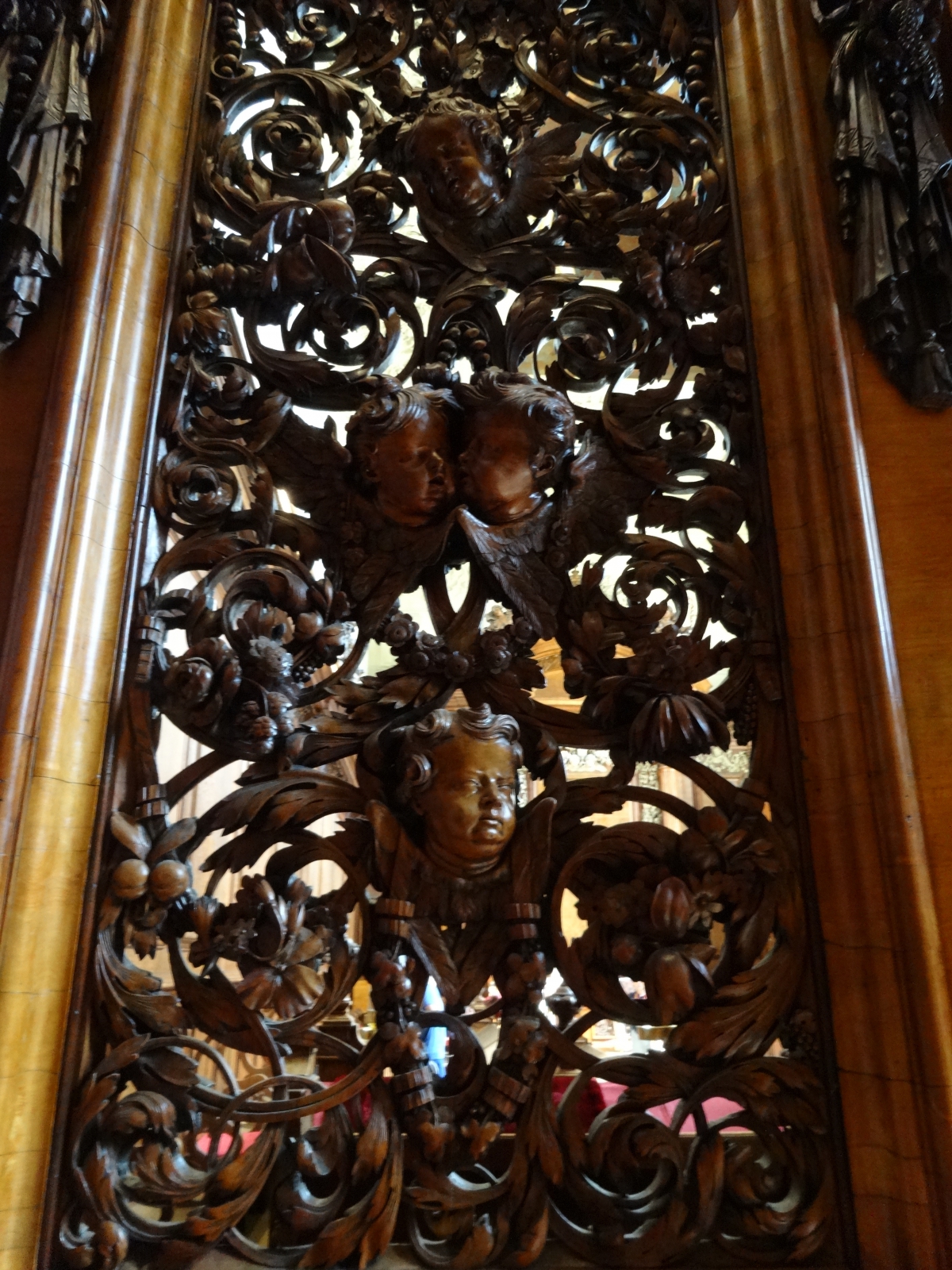
Screen – nave side
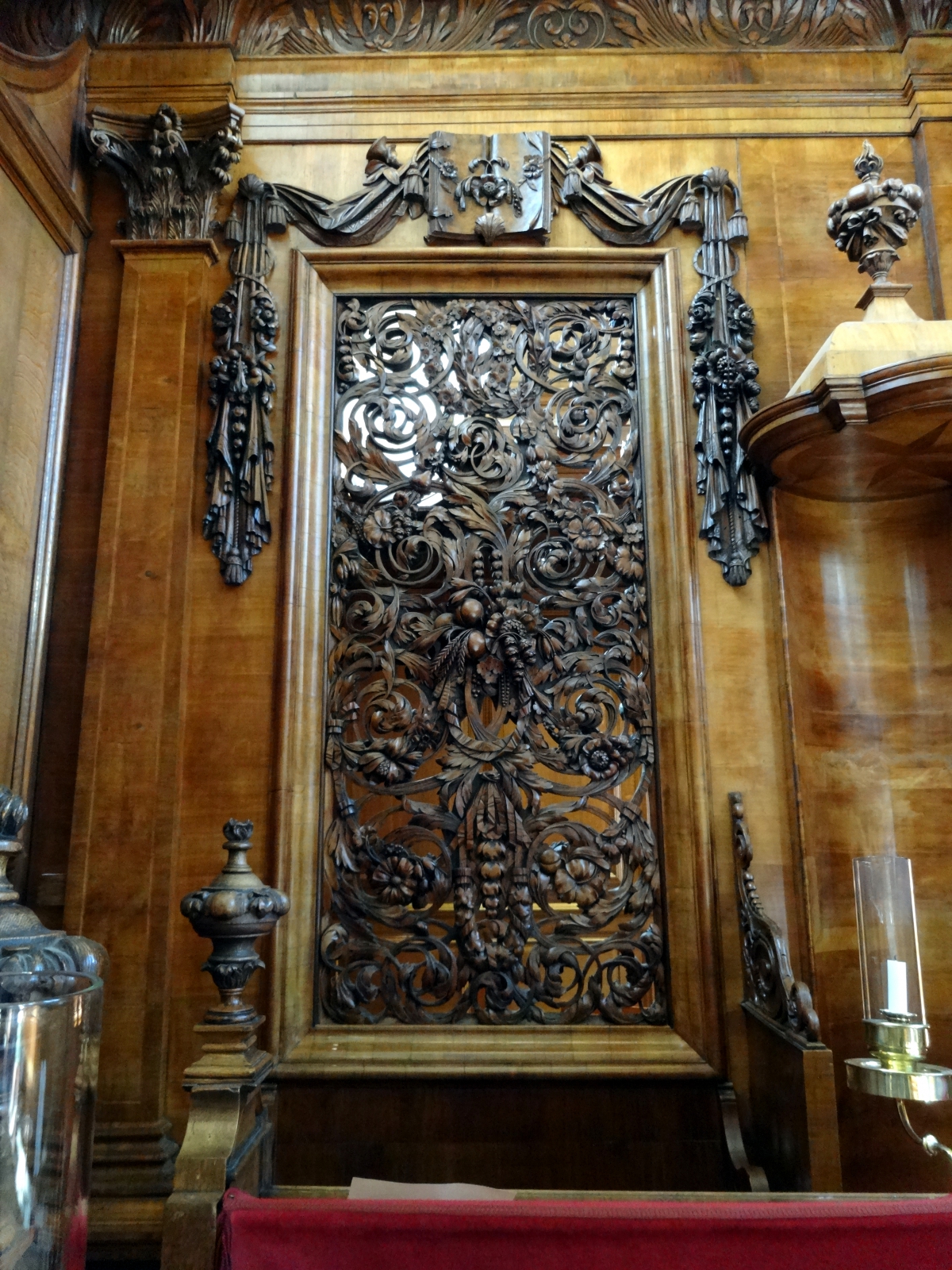
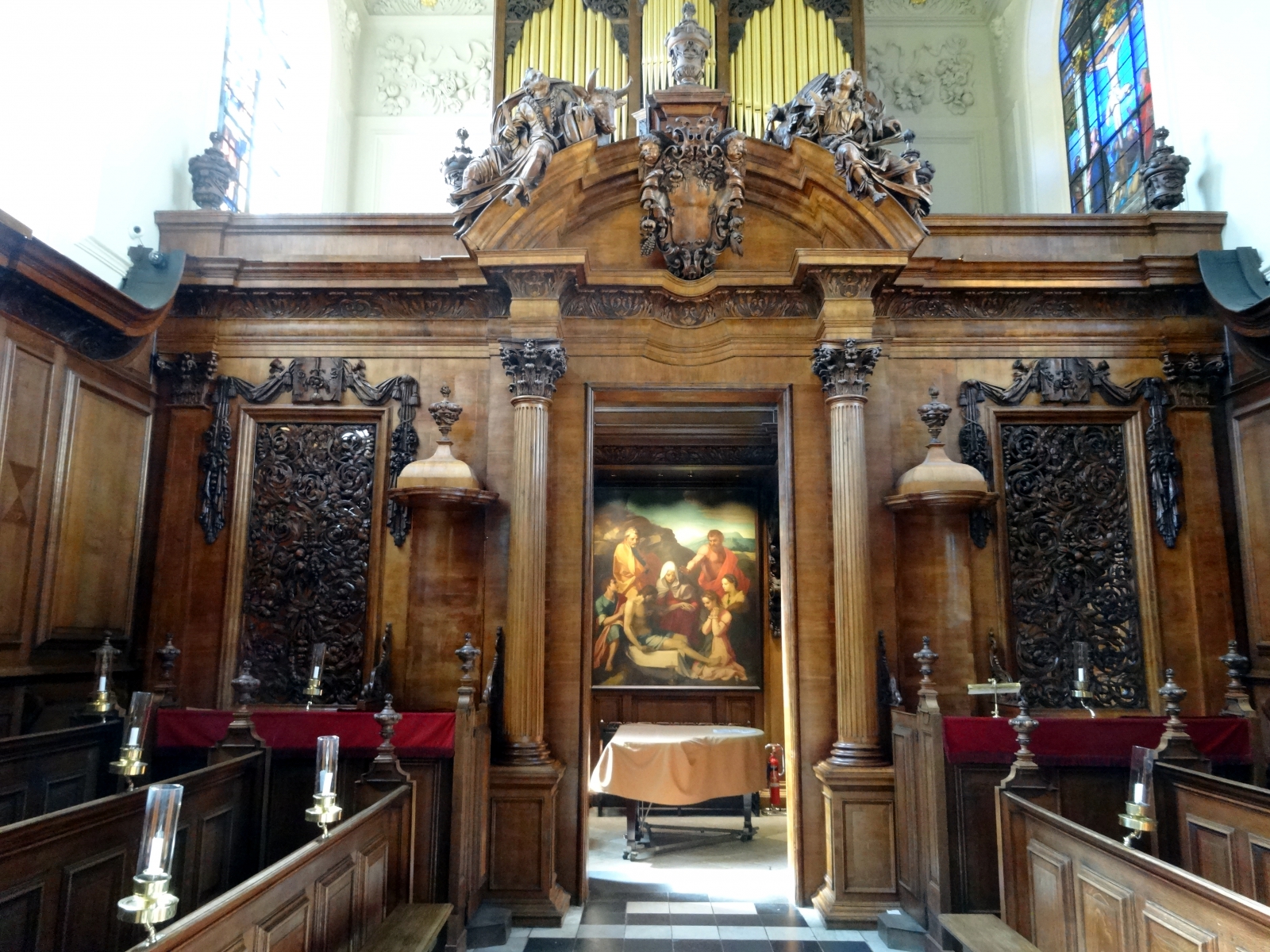
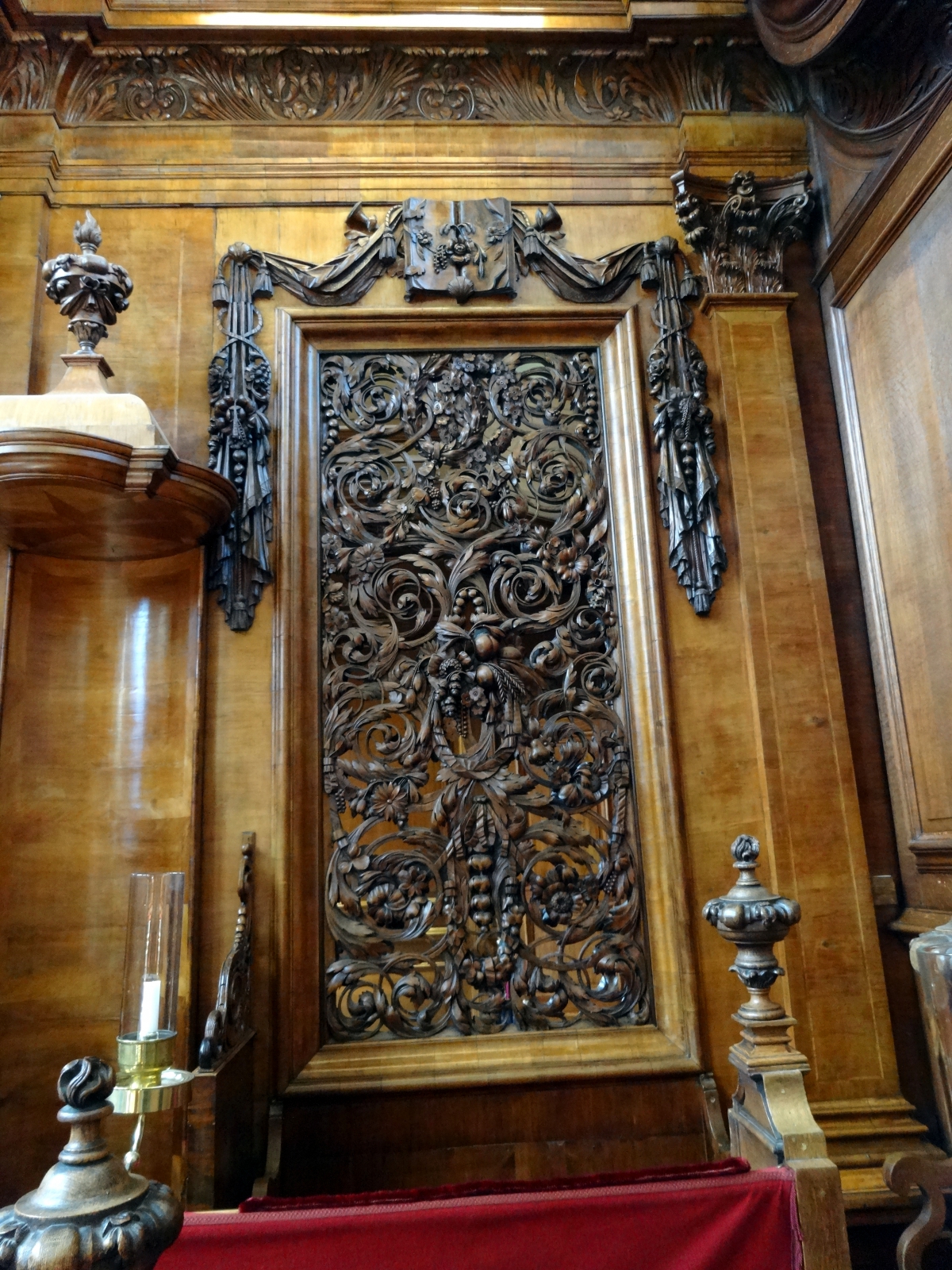
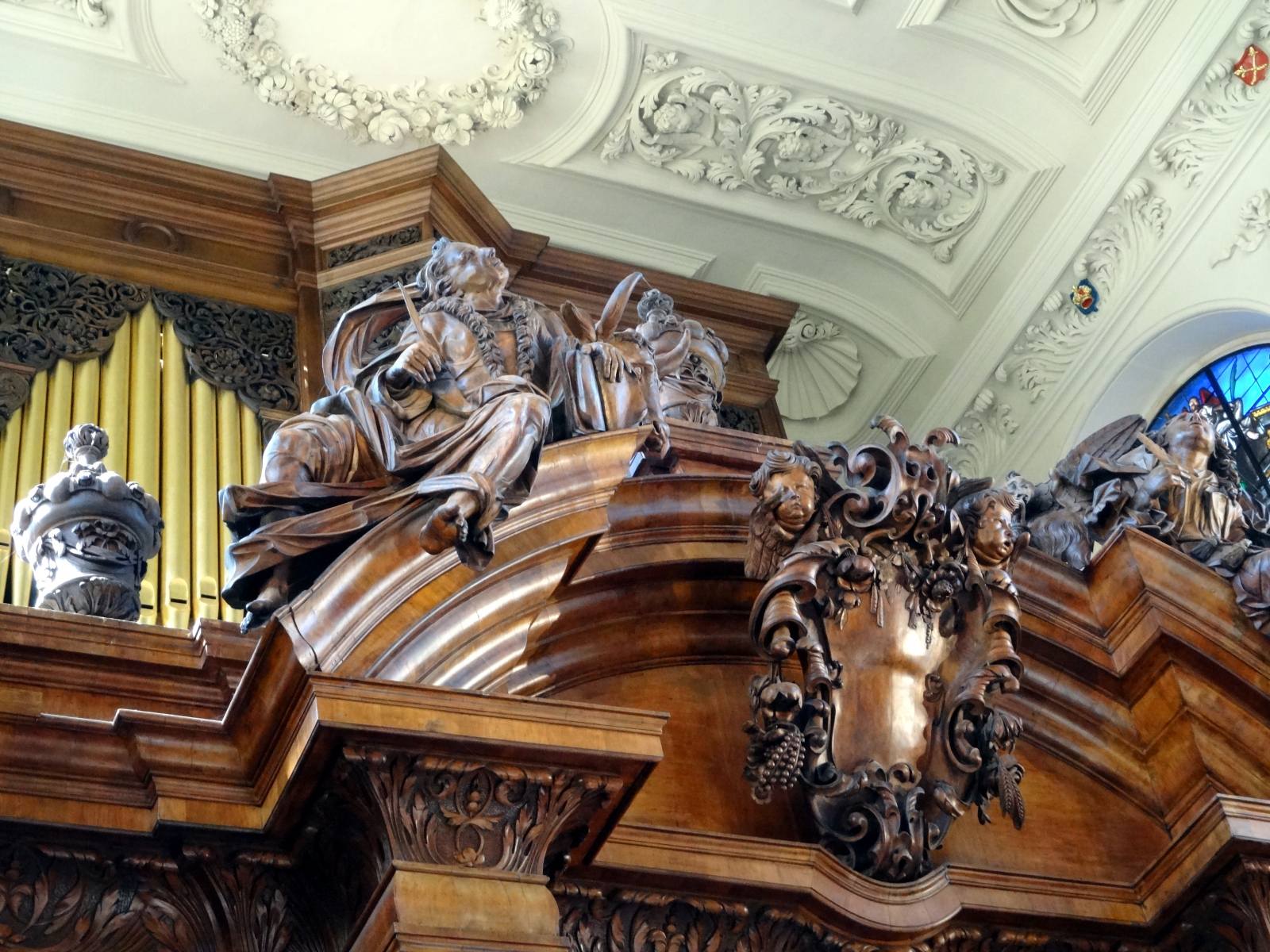
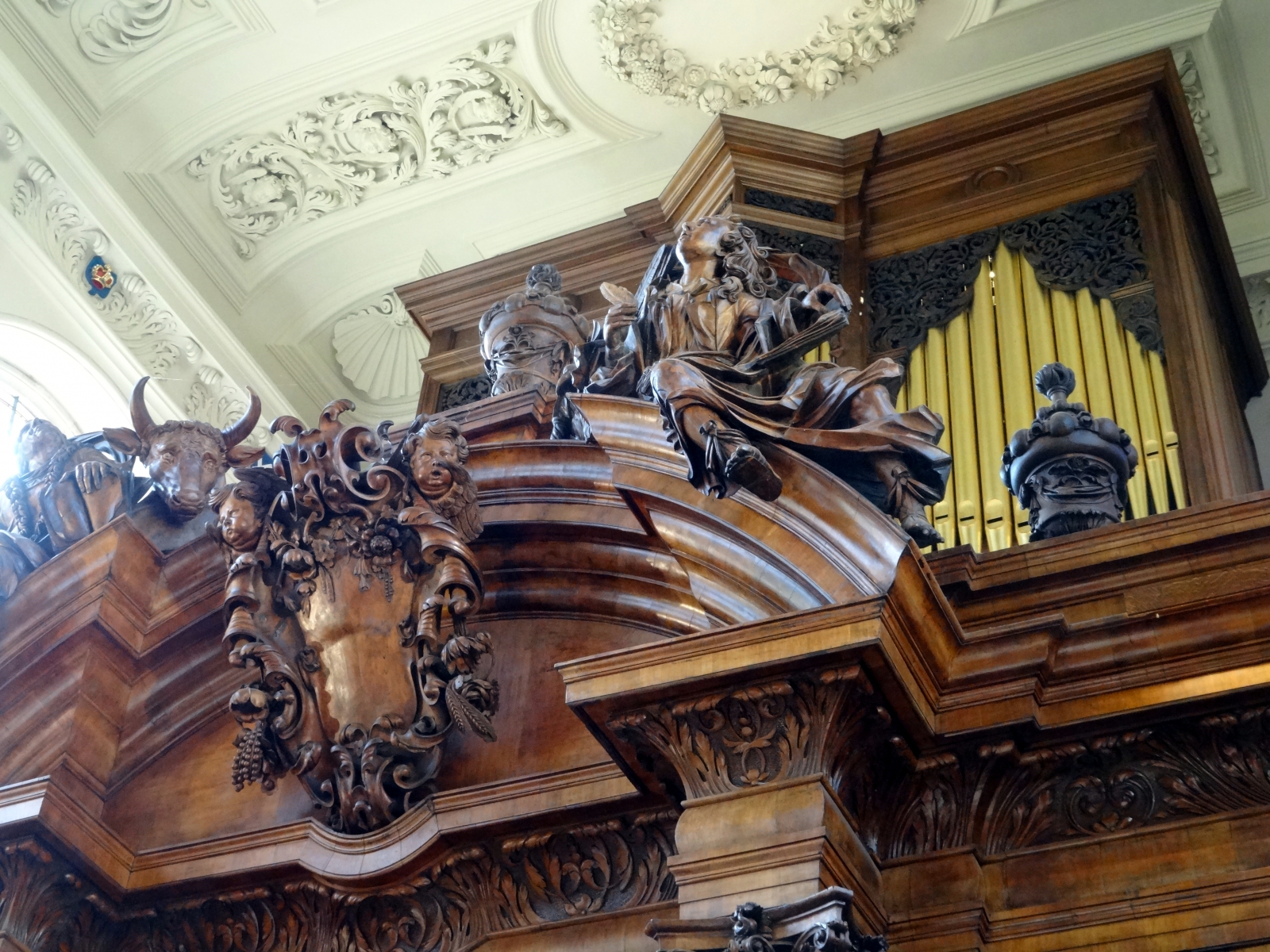
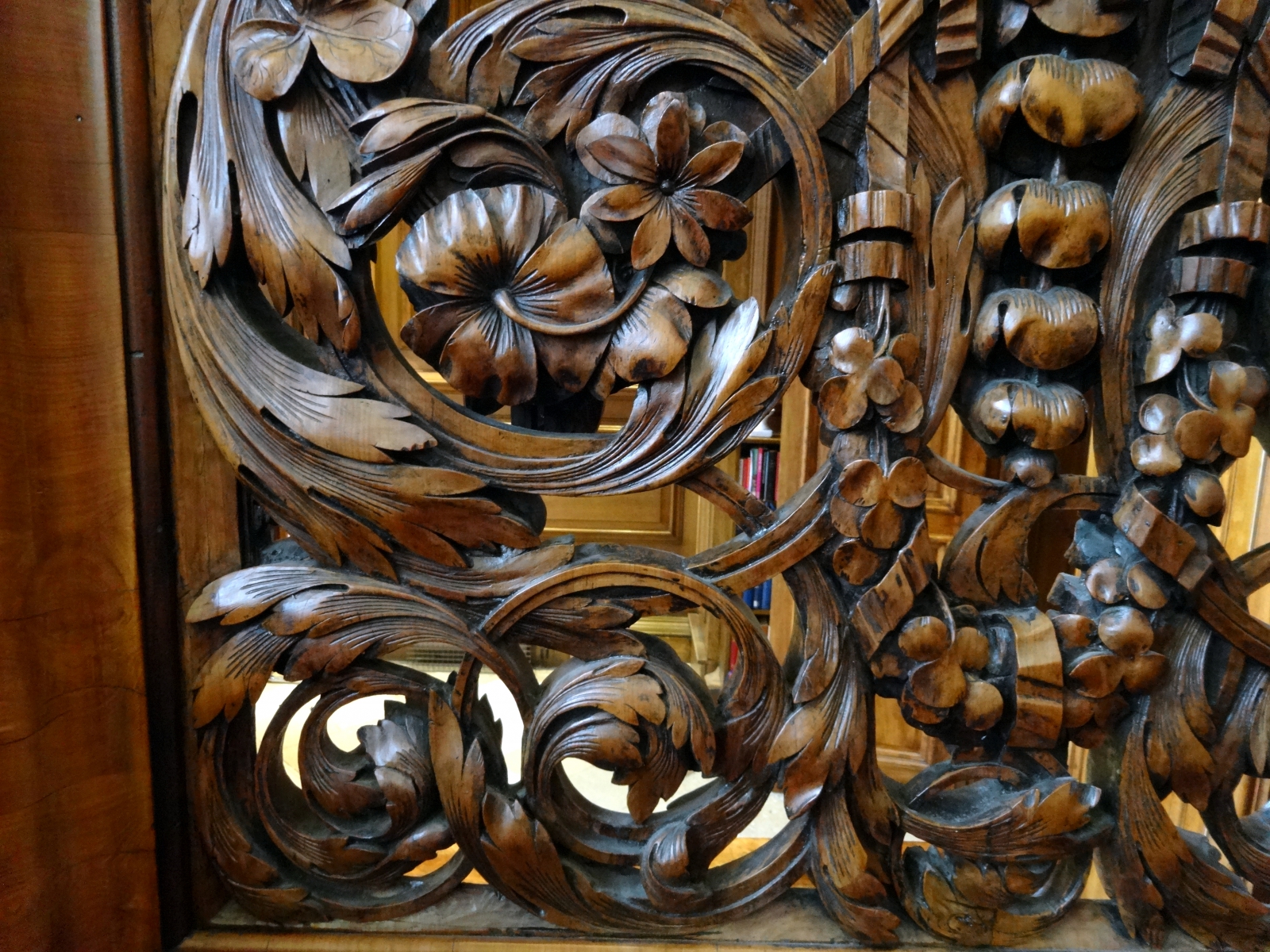
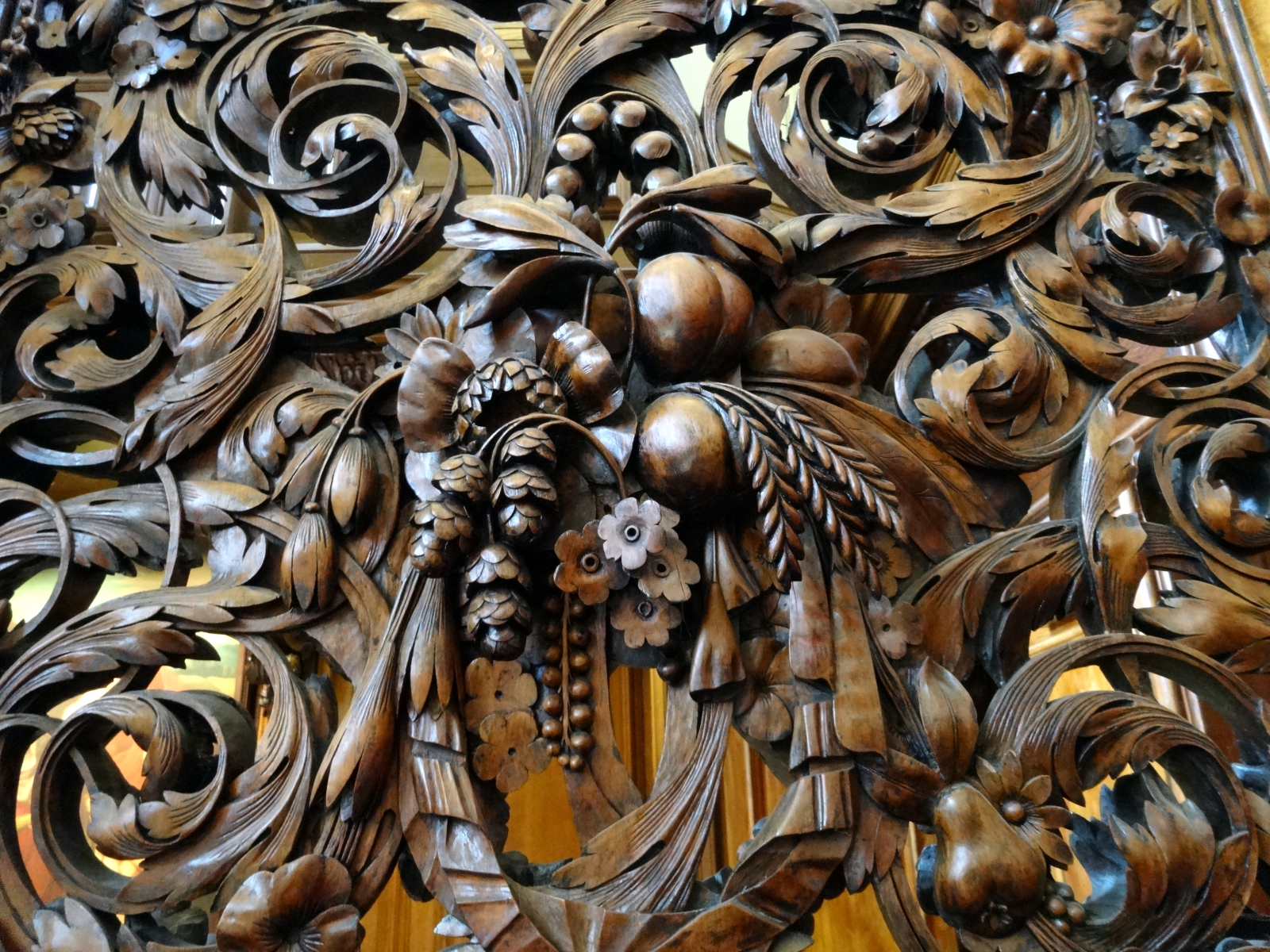
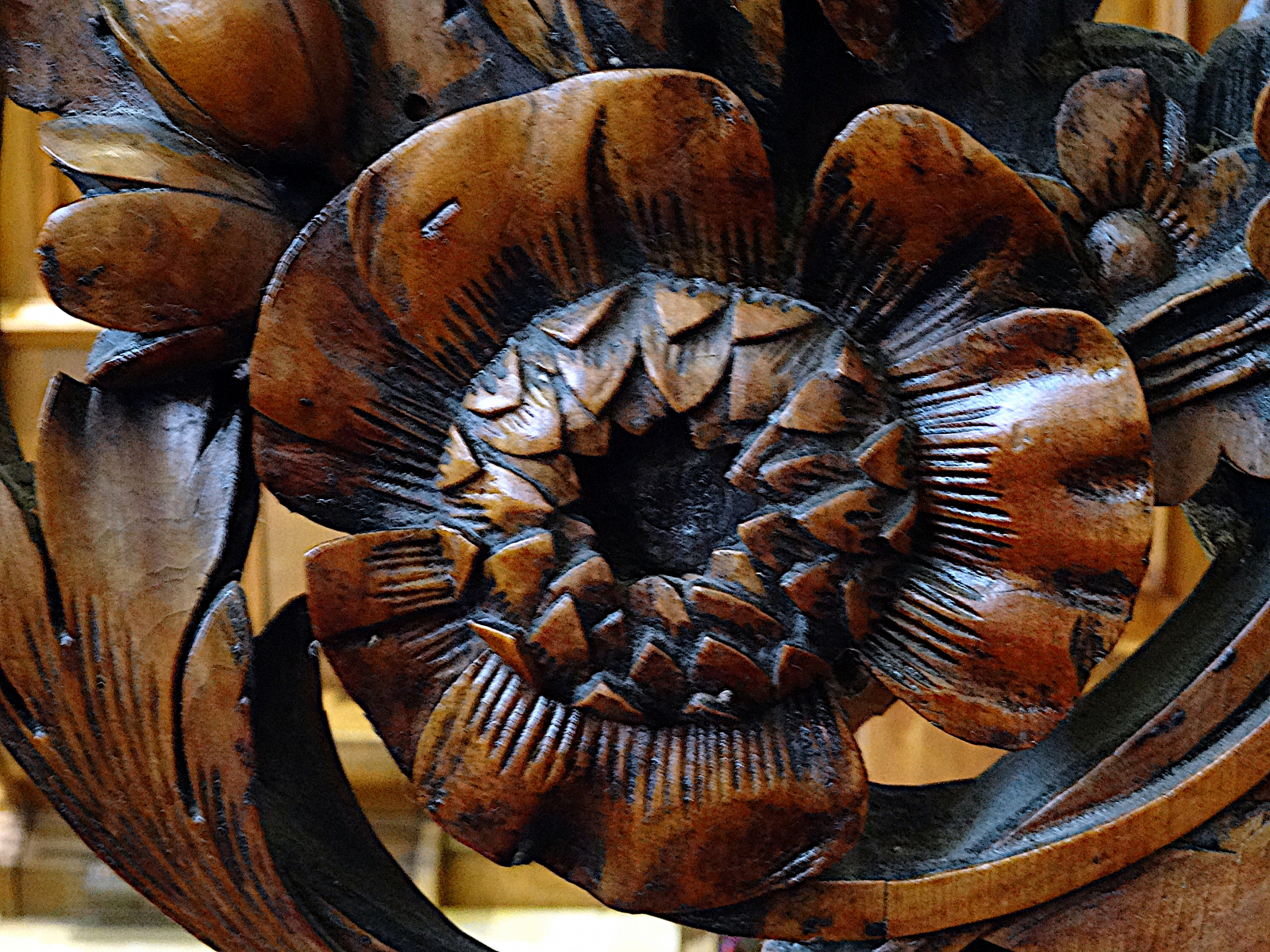
Conservation work
The building, and everything inside it, has been recently restored, correcting problems ranging from moisture in the masonry, to insect holes in the carvings, to removing the paint and hideous dark stain from the carvings, to fixing previous temporary patches, to replacing missing parts, to repairing the plaster work on the ceiling, even to replacing halogen lighting fixtures.
Woodcarvers and anyone interested in conserving wood carvings will find “Grinling Gibbons at Trinity College Chapel,” by Martin Hall, a fascinating article. Mr. Hall offers a brief history of the chapel and then jumps into detail about the conservation decisions and techniques used for conservation. For example, he tells of the parts replacement strategy:
“Using mid-19th and early 20th-century photographs, Alan Lamb was able to determine which elements had been lost over time and a number of these were replaced. The decision on what to replace was generally guided by the ‘six-foot rule’: if it can’t easily be seen from six feet away, don’t replace it.”
Hall also describes several areas where significant elements were, perhaps unintentionally, rearranged during previous conservation efforts and have now been restored to their correct placement.
Alan Lamb is mentioned several times in the article as the leader of the carving conservation effort. His business, Swan Farms Studios, did a yeoman’s job of removing layer upon layer of wax, stain and paint from almost everything, and then repairing the carvings. See Swan Farm Studio articles here, and here for more detail and more superb close-up photos of the conservation work. Both of those pages feature slide shows showing before and after views of St. John and the “Victory” angel, as well as detailed shots of conservators doing their work.
Wait, there’s more… Thomas Ball is an award winning carver who was part of Alan Lamb’s Swan Farms Studios conservation team. Tom has an Instagram-like page showing some of his own work on this project; yet more photos and description of restoration work. (After seeing these and the Swan Farm Studios pages, you can go back and search my photos for the replacement/repaired parts.)
An abundance of other carvings
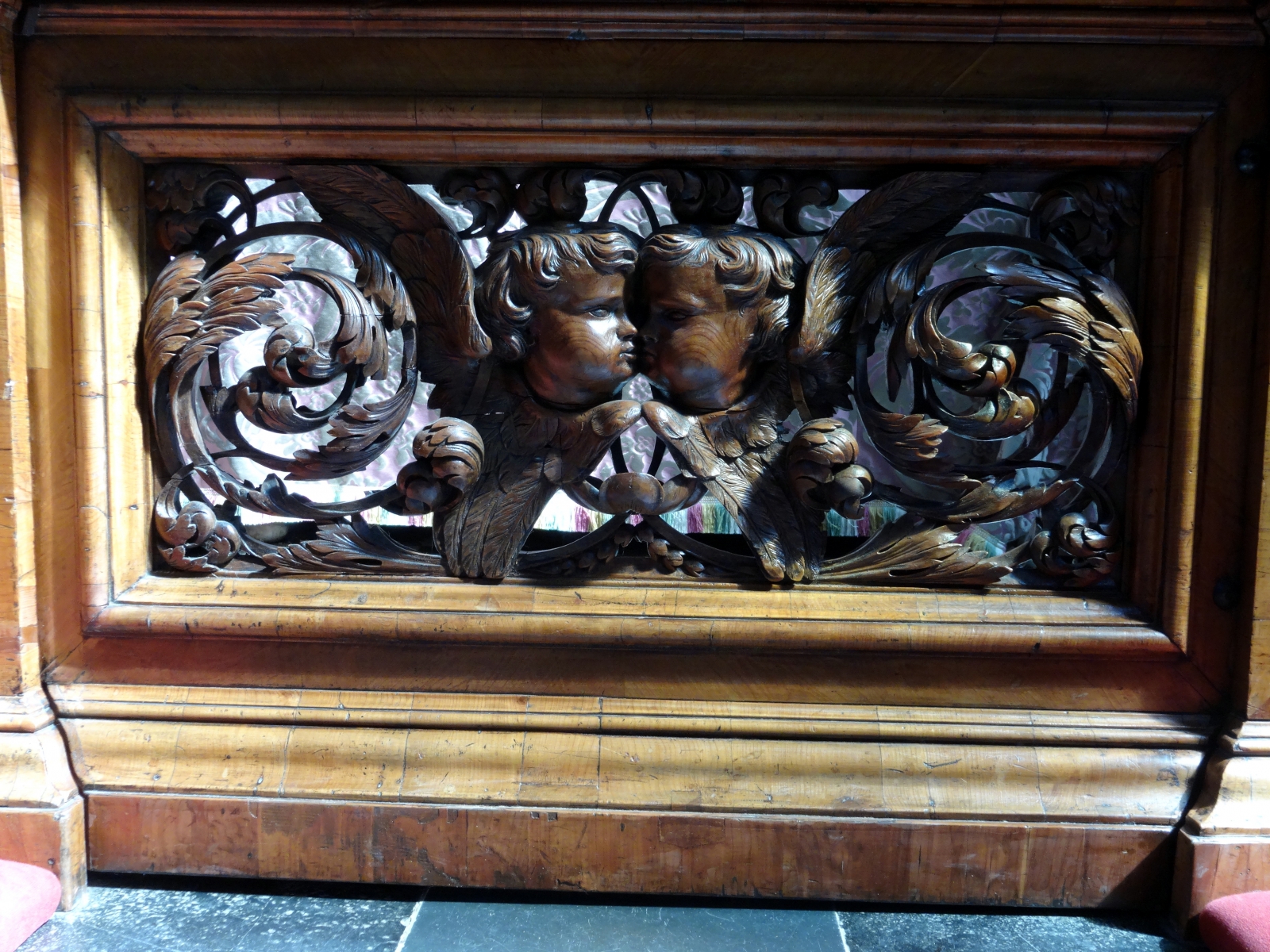
Look around. My photos focused on the main Gibbons carvings. There are many many other carvings: columns and their tops, urns (literally dozens), cove mouldings, deeply raised panel mouldings, communion rail panels, corbels, swags, small screens, etc.
Several times, in other churches, we have seen extraordinary carvings for altar pieces surrounded by dull flat carvings for other, secondary, adornments in a church. Secondary carvings in this chapel are much different; they are all of the same quality as the featured carvings.
The article about conservation states that the reredos and screen are definitely Gibbon’s work and hints that most other carved pieces were from his shop. The quality of all carvings blend together harmoniously, making this chapel an outstanding, homogeneous, delight for fans of Gibbons.
Getting there
Our trip to Oxford began in London’s Paddington station, where there are 7 or 8 trains a day, each direction. Travel is about an hour each way. It is easy to take a morning train, see a good bit of Oxford, and return to London the same day.
Oxford is a surprisingly busy place. I have never imagined colleges and universities as tourist attractions, but in Oxford they certainly are. Thousands of tourists, and dozens of tour buses, fill the streets. Some of it might be people wanting to see the various locations where Harry Potter scenes (map, PDF) were filmed.
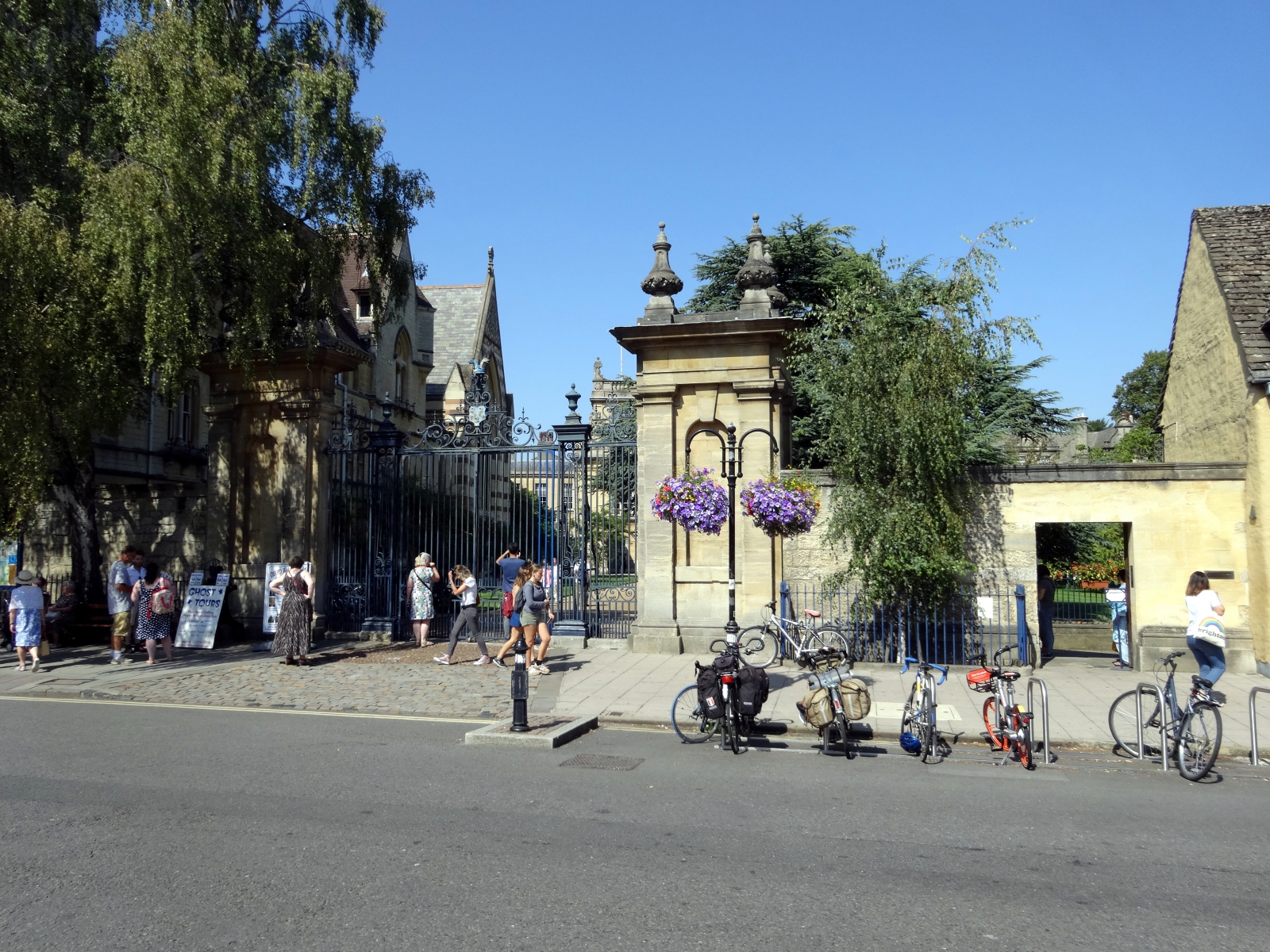
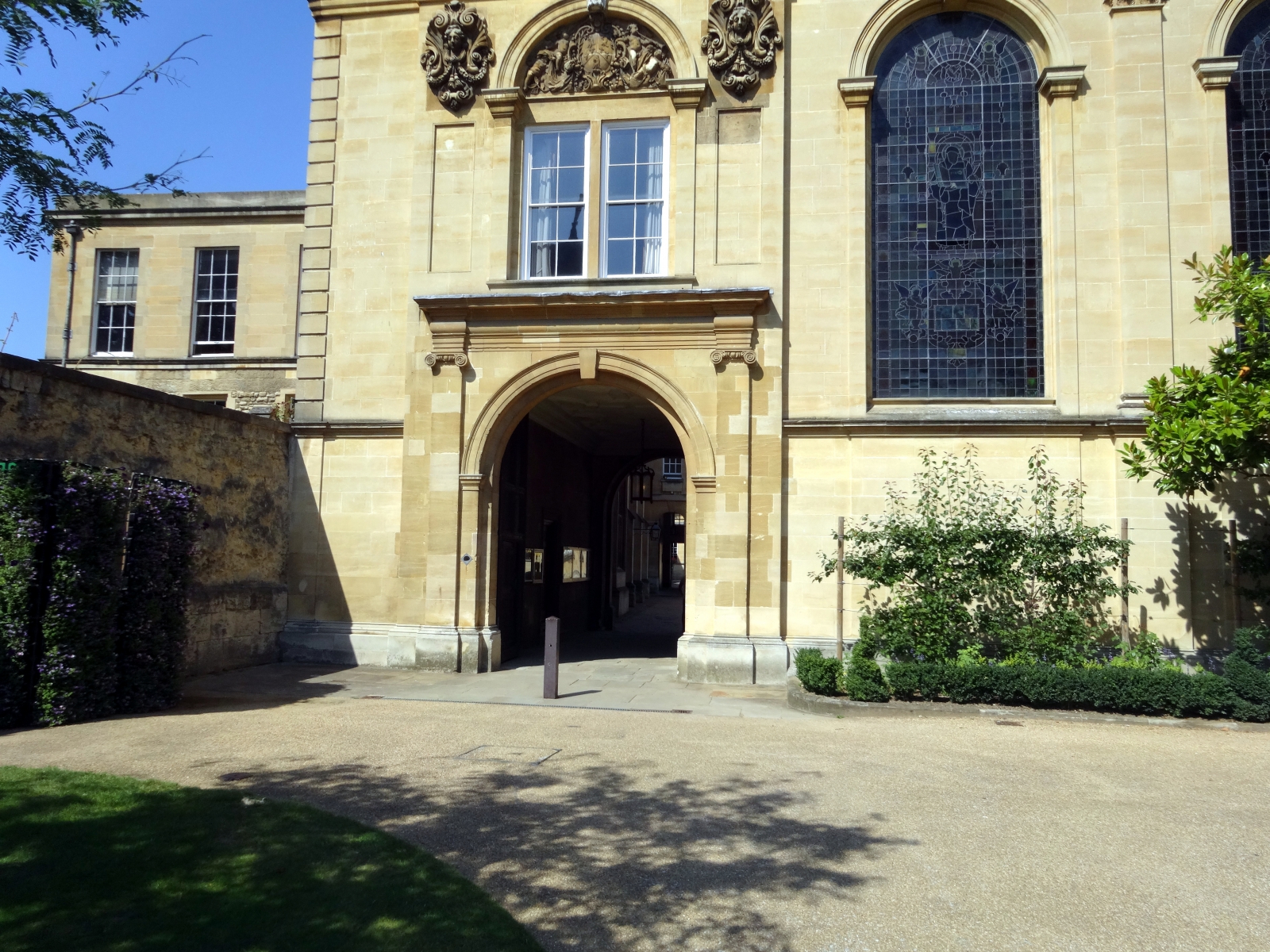
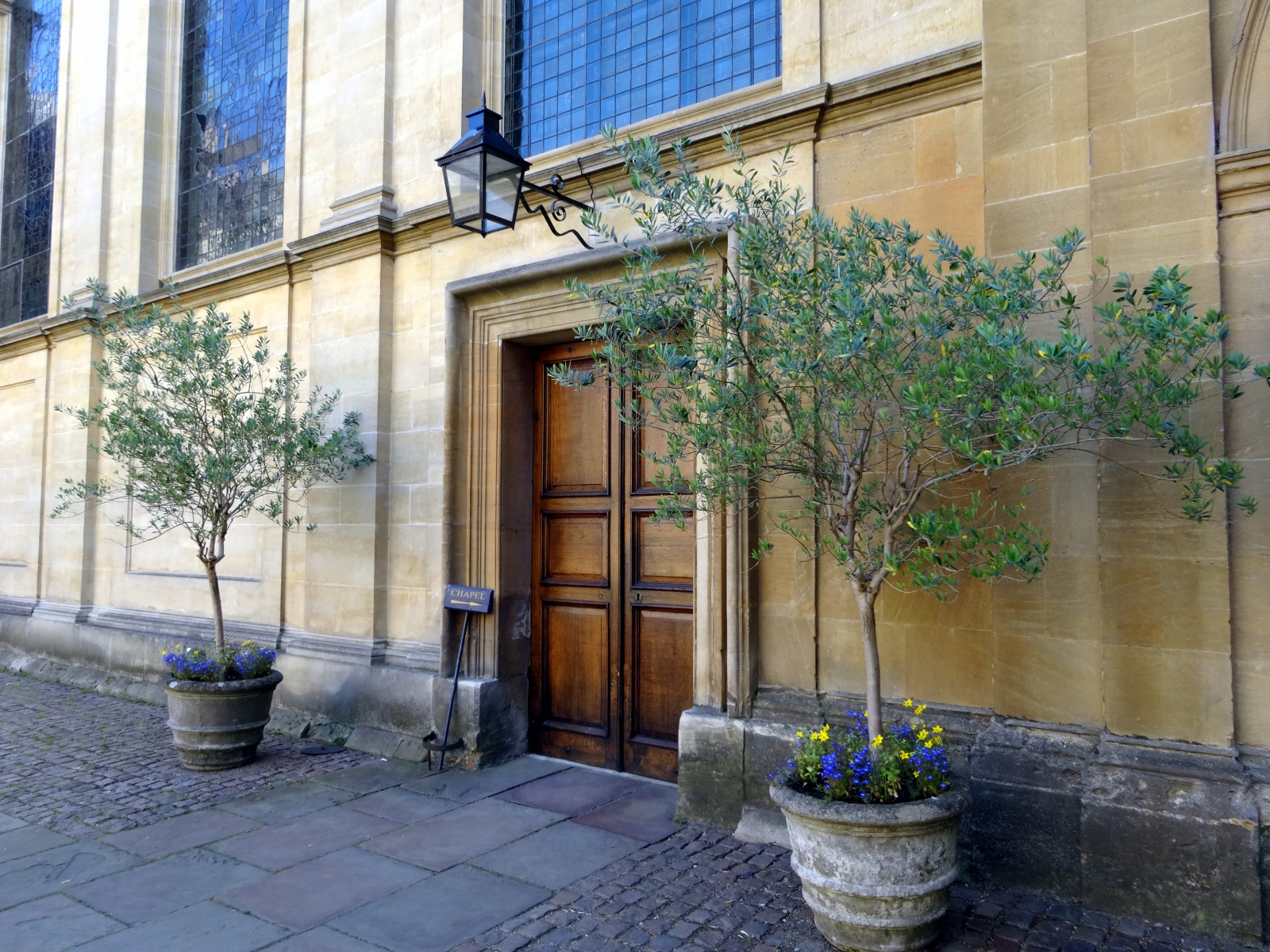
Trinity College does not have any prominent markings. You have to know where to look for “the blue gate” on Broad Street. Entrance to the grounds is through the door in the wall to the right of the gate. Visiting times are limited to mid-day hours. Be sure to check their visiting schedule. Once beyond the gate, go straight ahead through the portico in the next building. Then turn to the right to enter the chapel.
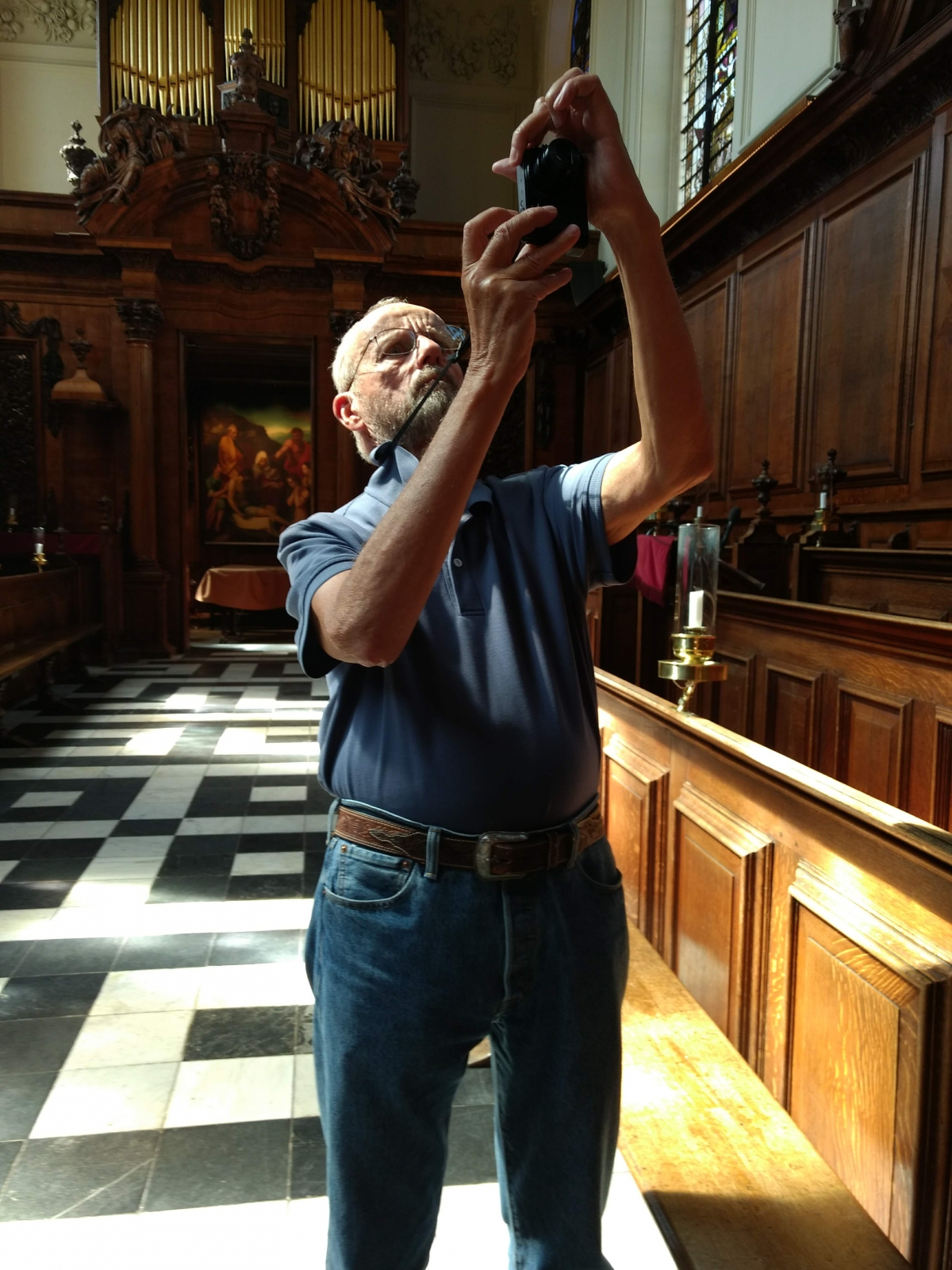
Eva was taking pictures of the guy who was taking pictures, who was working “handheld” and “available light,” no tripods or flash allowed most places.
Lastly, a quiz: Are there more putti or more urns with flame finials?
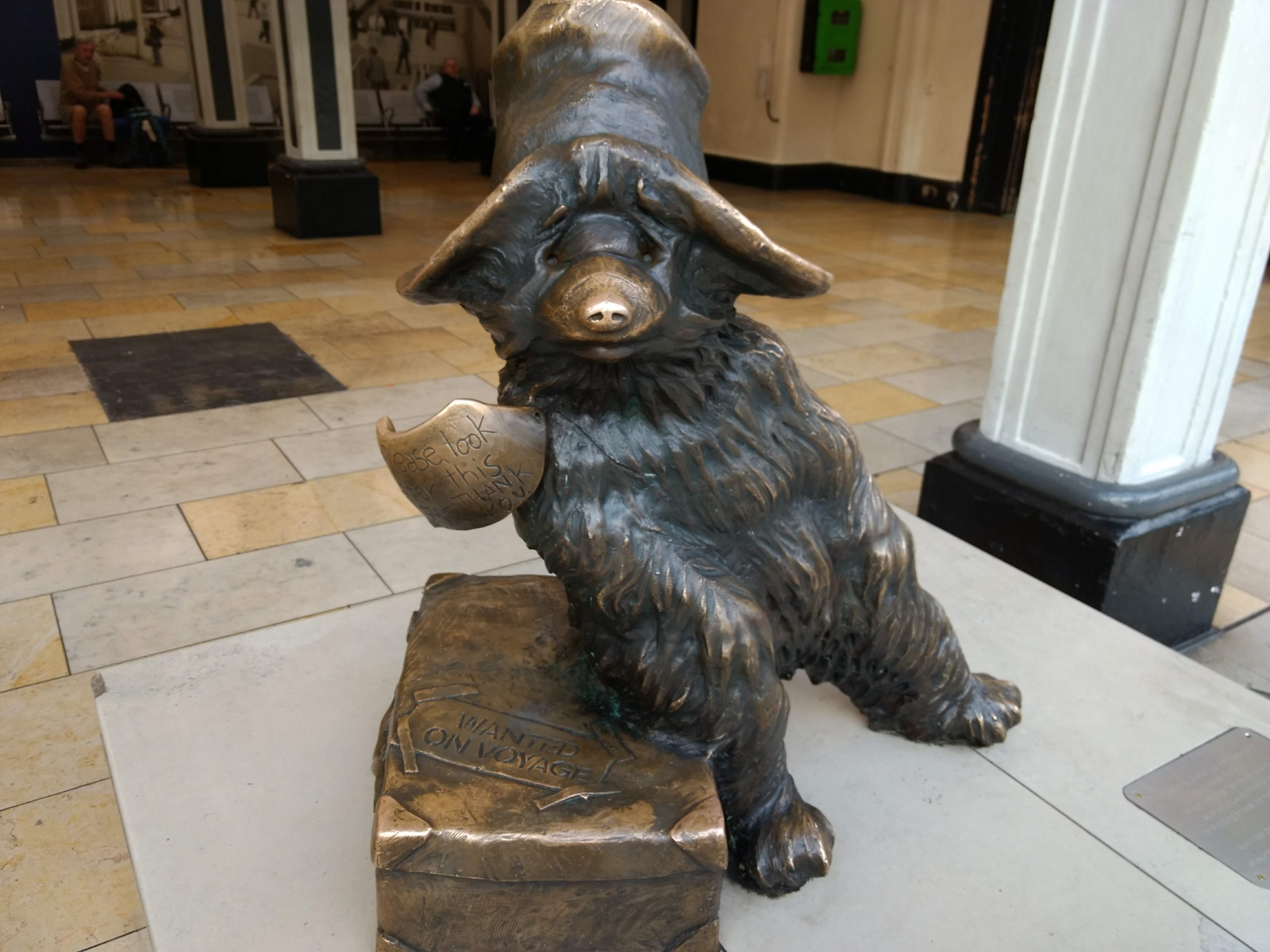
Your comments are welcome: